BEEF PRODUCER
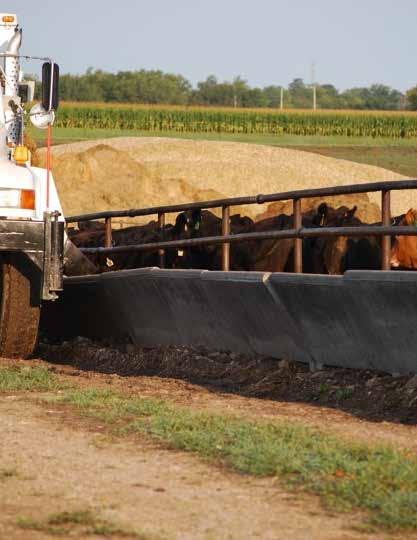
FA L L 2023 / VOLUME 15 / ISSUE 2

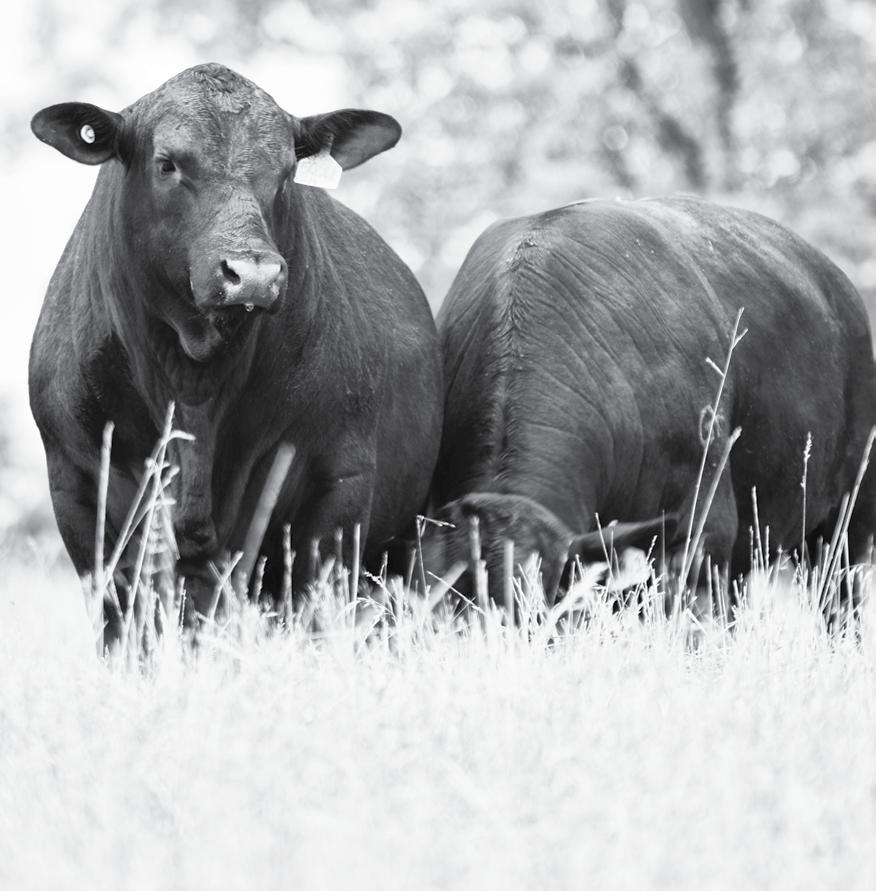
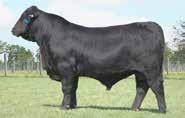
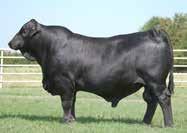
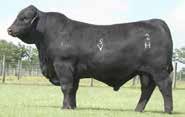


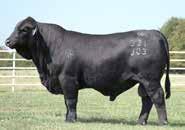
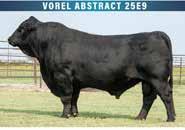

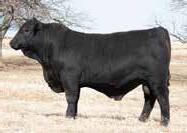
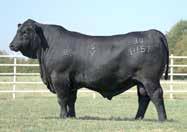
GENEPLUS GENEPLUS GENEPLUS GENEPLUS $50 $25 -1.2 58 87 9 1.4 0.66 0.47 BW WW YW M SC REA IMF -1.8 45 76 7 1.37 0.31 0.00 BW WW YW M SC REA IMF 0.2 43 72 5 1.63 0.47 0.30 BW WW YW M SC REA IMF 1.0 41 66 6 0.01 0.47 0.65 BW WW YW M SC REA IMF 1.0 54 91 9 1.32 0.81 0.19 BW WW YW M SC REA IMF 1.5 49 85 3 1.33 0.39 -0.09 BW WW YW M SC REA IMF -0.9 49 89 6 1.44 0.63 0.16 BW WW YW M SC REA IMF -2.2 48 90 6 0.6 0.56 0.26 BW WW YW M SC REA IMF -1.0 43 76 5 1.36 0.52 0.15 BW WW YW M SC REA IMF -0.1 38 71 8 1.57 0.53 0.14 BW WW YW M SC REA IMF $50 $20 $50 $20 $50 $20 $50 $20 $50 $20 $50 $20 $50 $20 $50 $20 $50 $20
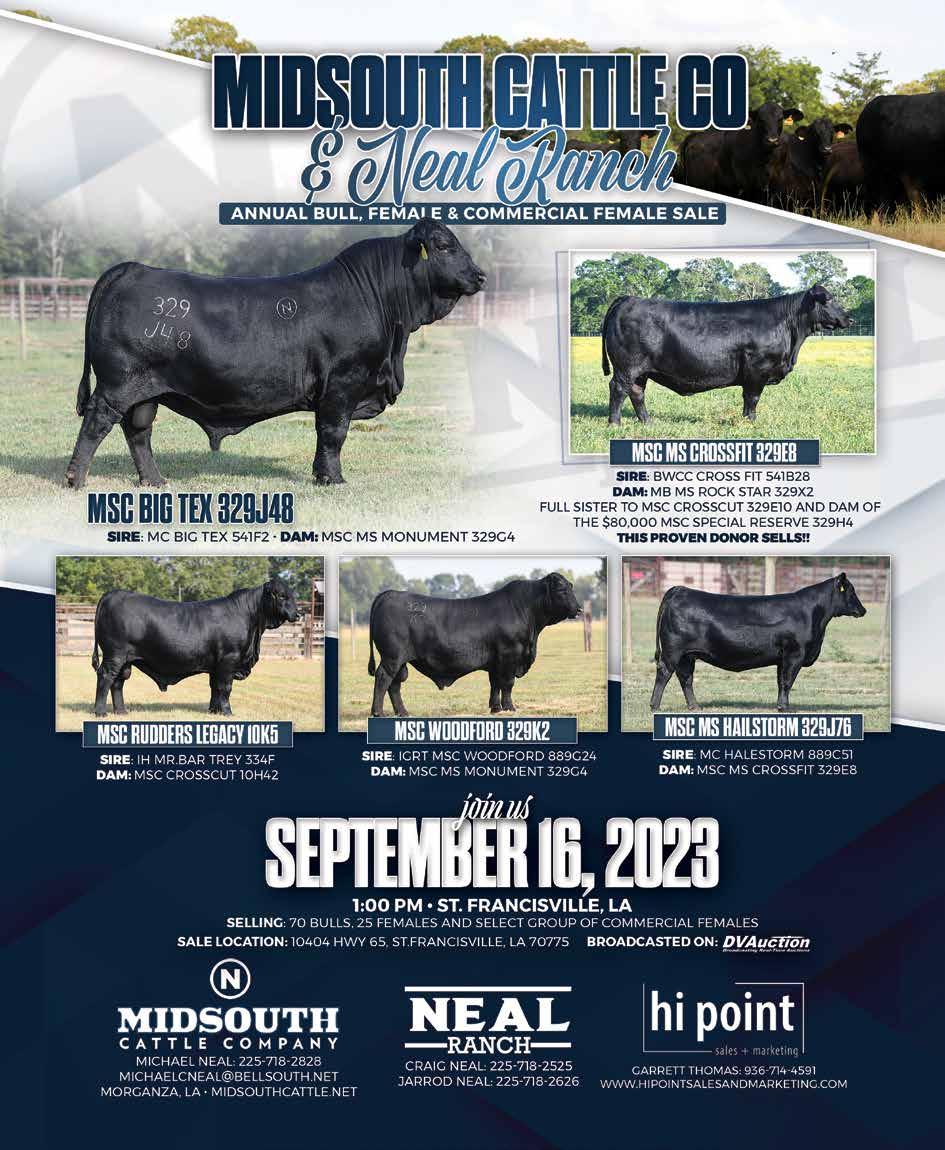
FEATURED 19
Raising The Bar, Then Exceeding It
The 2022 National Beef Quality Audit (NBQA) not only documented where beef producers are winning, but where their performance still can be improved.
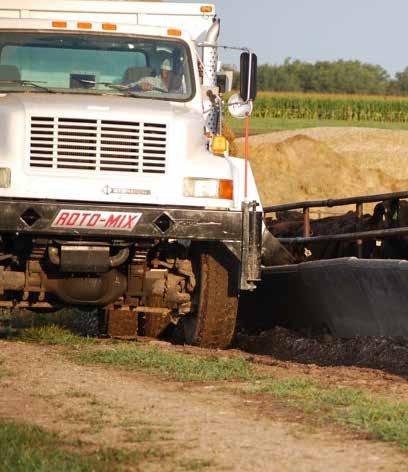

Update From The Field
IBBA Director of Field Services and Strategic Projects, Kyle Caldwell, talks about his latest travels and adventures while out and about with our Brangus breeders and industry professionals!
Brangus Value Project Update
Round Two results are in, and just as encouraging as the data gained from last year. Brangus genetics deliver a premium value through high feed efficiency and tenderness quality.
Bet It All On Brangus
Discover how a producer’s use of 12 value-added programs led to the impressive sale of 112 weaned steer calves at $400/cwt, revealing the key strategies for success in the cattle business through prioritized health, genetics, and marketing practices among Brangus cattle breeders.
FALL 2023 FRONTLINE BEEF PRODUCER 6 IN EVERY ISSUE 8................................................ PRESIDENT’S LETTER 12 EXECUTIVE CORNER 31 CATTLEFAX TRENDS 55 SERVICE DIRECTORY 55 - 59.......................................... STATE DIRECTORY 60.............................................................. CALENDAR 62................................................................ AD INDEX
38 27 Fall ‘23
48
BEEF PRODUCER

FA L L 2023 / VOLUME 15 / ISSUE 2
Consistency is the Key
by Rob Singleton, International Brangus Breeders Association (IBBA) President
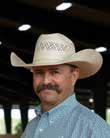
Aristotle once wisely stated, “You are what you consistently do,” underscoring the profound truth that excellence isn’t a fleeting act but rather a steadfast habit. Our remarkable community has exhibited remarkable progress, a testament to our dedication. However, let us not falter in our pursuit of excellence; rather, let’s remain resolute in our commitment to listening to our valued customers and consumers to meet their demands effectively. I salute my fellow Brangus breeders; our collective efforts are gaining recognition!
I’m aware that some parts of Brangus territory are grappling with dry conditions once again, and I fervently hope for a change in this situation. The arrival of fall also heralds the calving of our fall cows, a source of genuine excitement. Furthermore, the beef industry is
currently experiencing an unprecedented market boom. Prices for all classes of beef cattle are scaling heights we’ve seldom witnessed, if ever. This positive trajectory seems poised to endure for the foreseeable future, reinforcing our resolve to pursue excellence and expand our market presence.

As autumn approaches, the prospect of board elections looms. If you possess the fervor and dedication to guide our esteemed association, I encourage you to reach out to a board member in your locality to explore this opportunity. It’s important to recognize that assuming a leadership role within our breed demands an investment of time and resources; however, the rewards are immeasurable. I’m immensely grateful for the chance to serve as your President.
Onward, BRANGUS enthusiasts!
FALL 2023 FRONTLINE BEEF PRODUCER 8
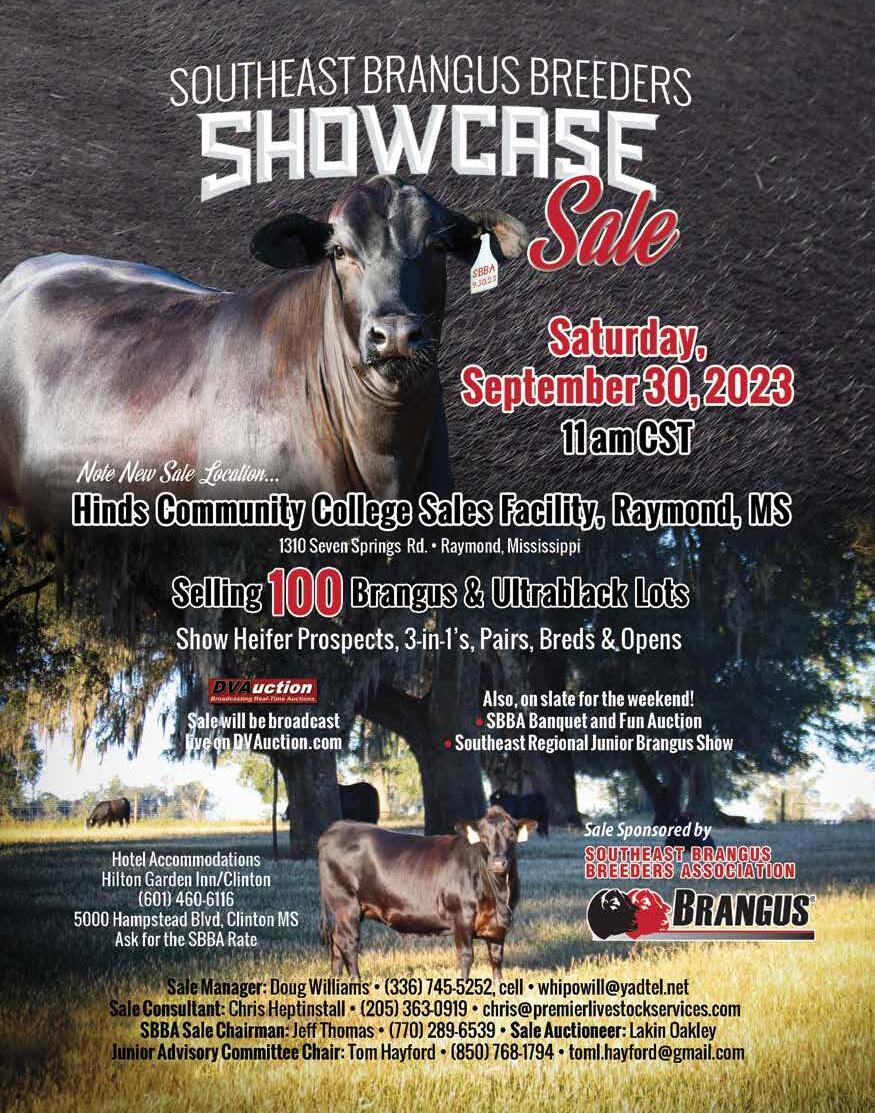
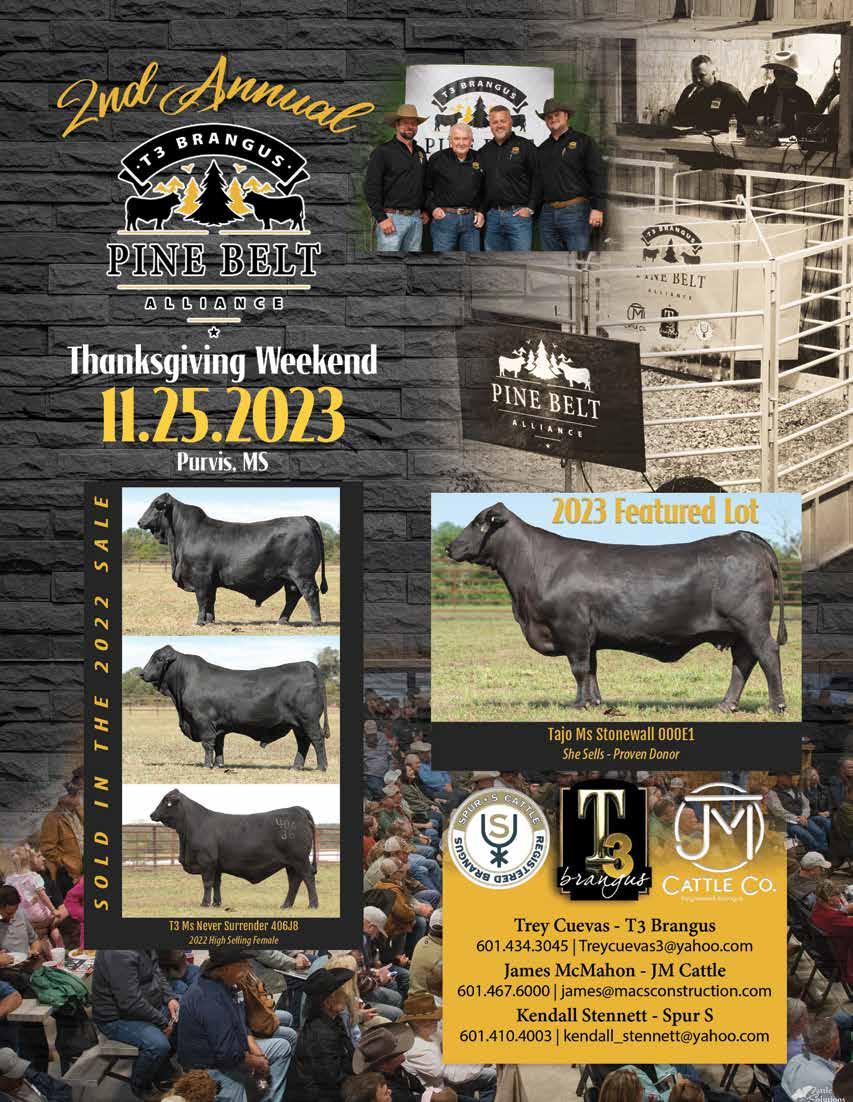
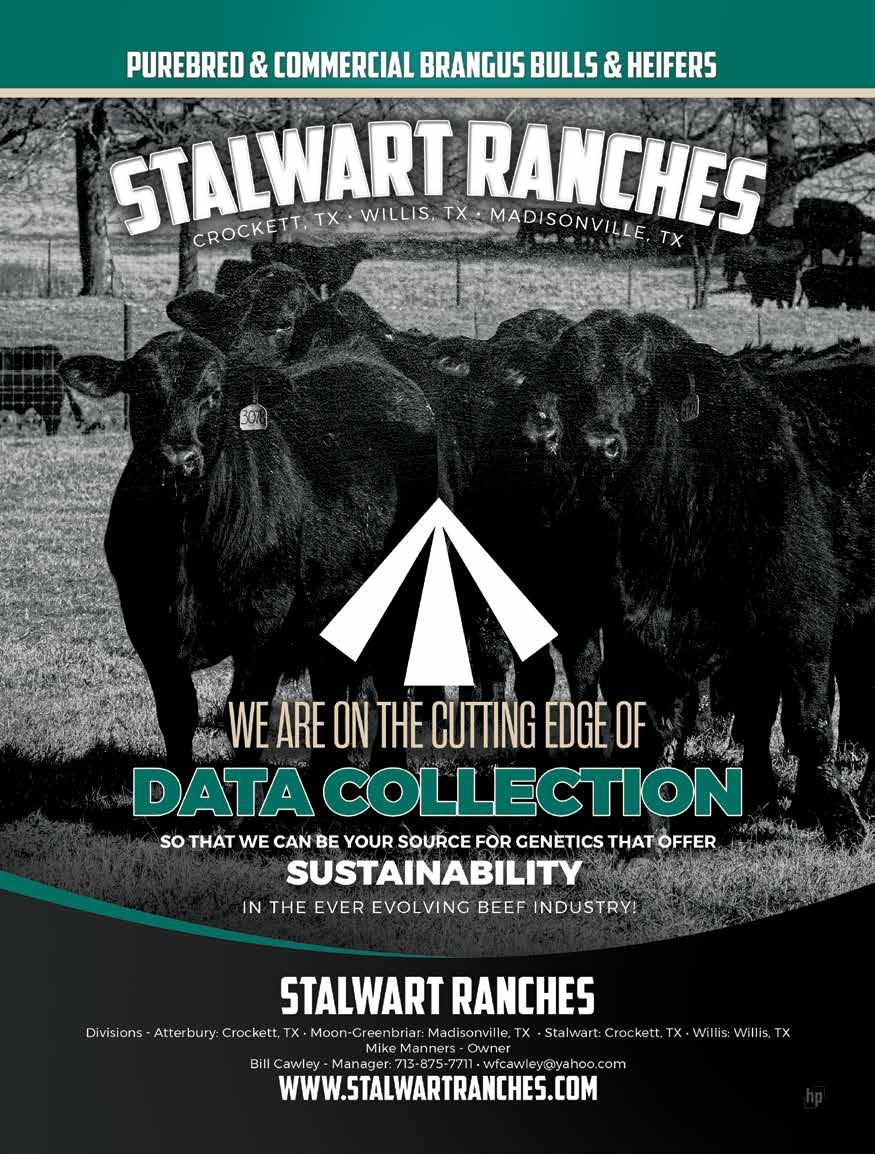
Looking Back At The
Beef Quality Challenge
by Darrell Wilkes, Ph.D., International Brangus Breeders Association (IBBA) executive vice president
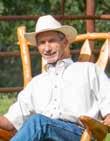
This issue of Frontline Beef Producer contains a summary of the 2022 National Beef Quality Audit (NBQA). The “audit” has been conducted approximately every 5 years since 1992. The data collected in each audit is a snapshot of the products produced by the beef industry. It highlights areas where we’re doing well and where we need improvement. I was deeply involved in the first NBQA, which was published in 1992. It was considered by some to be a rather maverick idea to actually publish – for the world to see – an audit that would expose some dirty laundry that we’d rather not publicize. We did it anyway. Without the data from the audit, we had no yardstick to measure progress. Moreover, we did not have a clear picture of how to prioritize research and education initiatives that would truly help the beef industry.
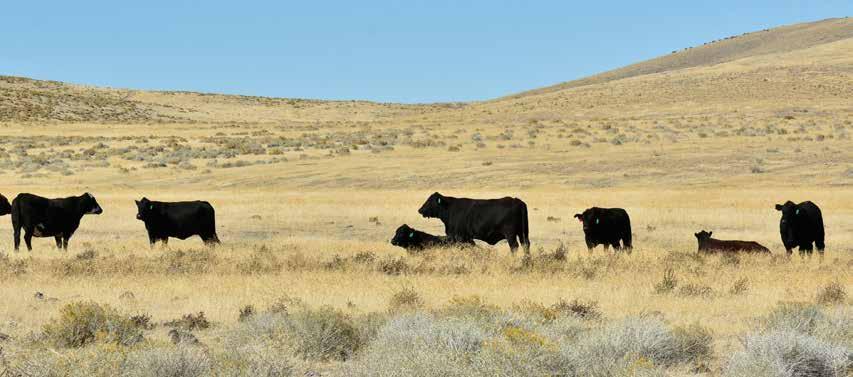
The first audit produced a number – a dollar figure – that was described as the “Cost of Non-Conformance”. In other words, how much money was the beef industry giving up because we were not hitting the right quality targets demanded by consumers, plus the cost of avoidable inefficiencies and defects? How much money was going down the drain? The first audit concluded that $279.84 per head was being unrealized by the beef supply chain due to quality deficiencies, system inefficiencies and defects that could – at least theoretically – be fixed. That is a HUGE number considering that the value of a fed steer back then was about $1,000 (average fed steer price in 1992 was $78.50/cwt).
I thought I was more subtle back then until I read a quote from yours truly in the Executive Summary of the 1992 National Beef Quality Audit.
“The results of the National Beef Quality Audit are too dramatic to ignore. This is the proverbial ‘2X4 between the eyes’ that tells us to wake up and get with it! If we’re going to compete in the 1990’s, we must take action now.”
Dr. Darrell Wilkes, Vice President Research and Industry Information, National Cattlemen’s Association – 1992.
The figure of nearly $280 per head being unrealized was scoffed at by some. A brilliant cattle businessman from Nebraska, the late Jack Maddux, put it in perspective when he famously said: “What if we’re only missing out on half that? Can we afford that?”
Speaking of a 2X4 between the eyes – when I reread the 1992 Audit, I was reminded that the single largest number that went into the overall number of $280 was . . .
FALL 2023 FRONTLINE BEEF PRODUCER 12
| EXECUTIVE CORNER |
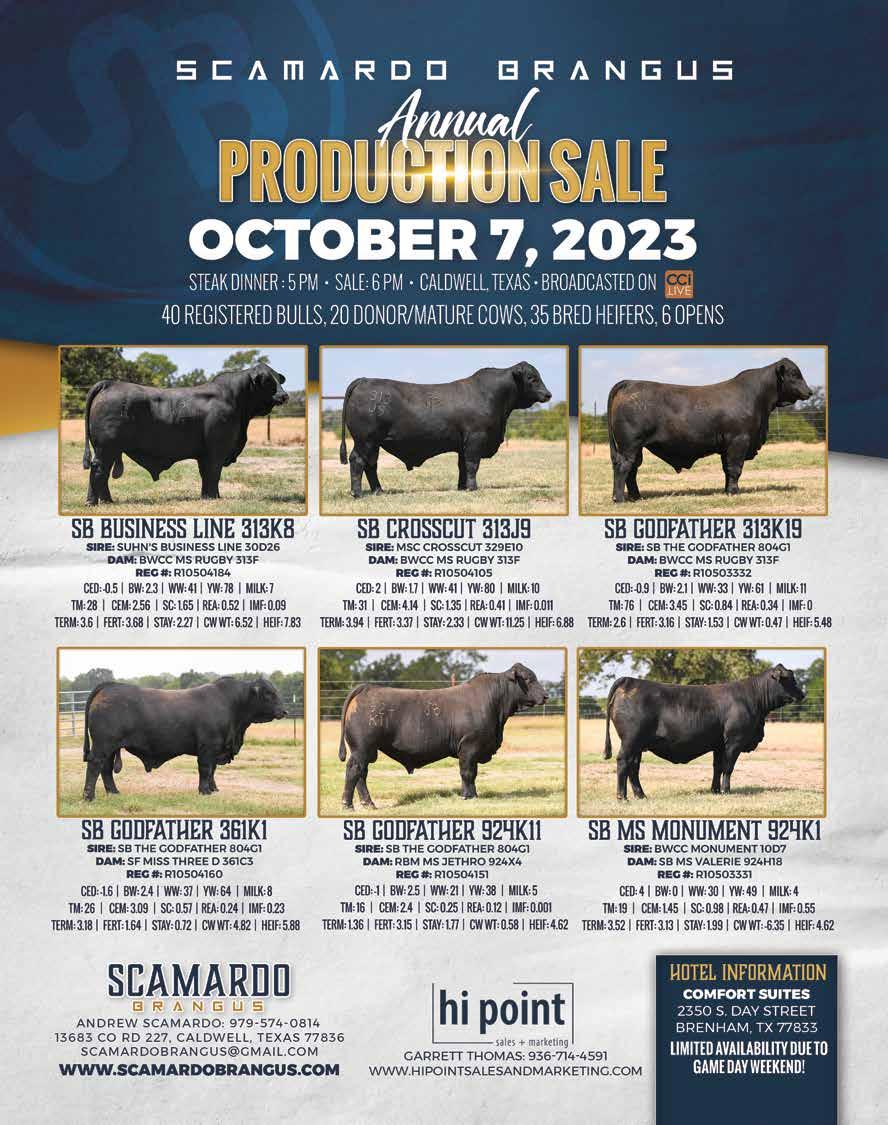
. . . $248.32 due to Genetic Management. This was further broken down into two parts: 1) mismanagement of acceptable genetics, and 2) genetic non-conformance. “Genetic nonconformance” is a friendly way of saying that some cattle are born to be misfits and no amount of heroic management can make them conform to what the marketplace demands. The 1992 audit explained genetic non-conformance as “lightmuscled cattle, cattle that grade Standard, cattle that must be fed to the fattest end of YG3 to grade Select, cattle that must be grown to a final weight of 1,500 pounds or more to achieve normal muscle-to-bone ratio, etc.”
History is interesting, especially when one is old enough to have lived through some of it (like me). It surprises some folks to learn that the U.S. beef industry was producing almost 75% Choice and Prime beef in the mid-seventies. And then there was a 20-year slide in quality grade from 1975 to 1995, bottoming out at 49% Choice and Prime in 1995. What happened? In my opinion – genetic mismanagement (i.e. using genetics that do not fit the marketplace).
This was a period of time in which Continental breeds were being imported aggressively and used by producers to “leapfrog” the slow but steady genetic trends for growth performance observed in British and American breeds. It looked like an easy way to add growth – overnight. Generally speaking, the Continental breeds had not experienced much if any genetic selection for beef quality (marbling). In fact, some traced their origins to dual-purpose breeds – used originally to pull ox carts and then converted to meat. This is not to say these cattle were “bad”. But many of them were simply not genetically suited to produce the quality of beef that American consumers wanted and had come to expect. Once those genetics became embedded in the cowherds across the country, beef quality was diluted and it has taken almost 30 years to get back to the percentage of Choice and Prime beef that we had in the mid seventies. It is not a coincidence that beef demand was in a freefall while our quality levels plummeted and then began to rocket higher the past 10 years as the improvements in beef quality have taken root and have been noticed and appreciated by consumers.
Cattle with a dose of indicus genetics have historically been seen as posing a beef quality challenge. Any feedyard manager will tell you that a pen of cattle with more than 50% indicus genetics is difficult to sell to a packer. They almost never get a live bid for them because the packer buyer is afraid to bid the cattle. They will only buy them if the seller agrees to “hang ‘em up”, which means that they’ll pay for the
cattle only on the basis of actual carcass value. In aggregate, it results in a lower than average price for the cattle. Meanwhile, back at the ranch, about 40% of the nation’s cowherd is located in geography that poses significant environmental challenges due to heat, humidity, sparse vegetation or some combination of all three. In those environments, cows with indicus influence have proven to be far more productive than British or Continental breeds simply because they are less stressed and are able to produce and reproduce at a higher level. Many people wrongly assume that we just have to live with either lower beef quality (from using indicus genetics) or lower maternal performance (from not using indicus genetics). That’s a trade-off that Brangus breeders flatly reject. There is no trade-off between beef quality and maternal productivity with Brangus – and we have the data to prove it.
This issue includes an update on the Brangus Value Project which shows that Brangus sires with the largest genetic footprint in our breed sire calves that perform exceedingly well in the feedlot and produce carcasses of significantly higher quality than the industry average. That’s the steer side of the equation. On the cow side of the equation, our Fertility Index and weaning weights continue to trend nicely upward over time. So, as a breed, we have the genetics to produce outstanding quality beef from cows that just keep getting better.

Thanks for your trust in Brangus. It is well-placed and much appreciated.
GO BRANGUS
FALL 2023 FRONTLINE BEEF PRODUCER 14
| EXECUTIVE CORNER |
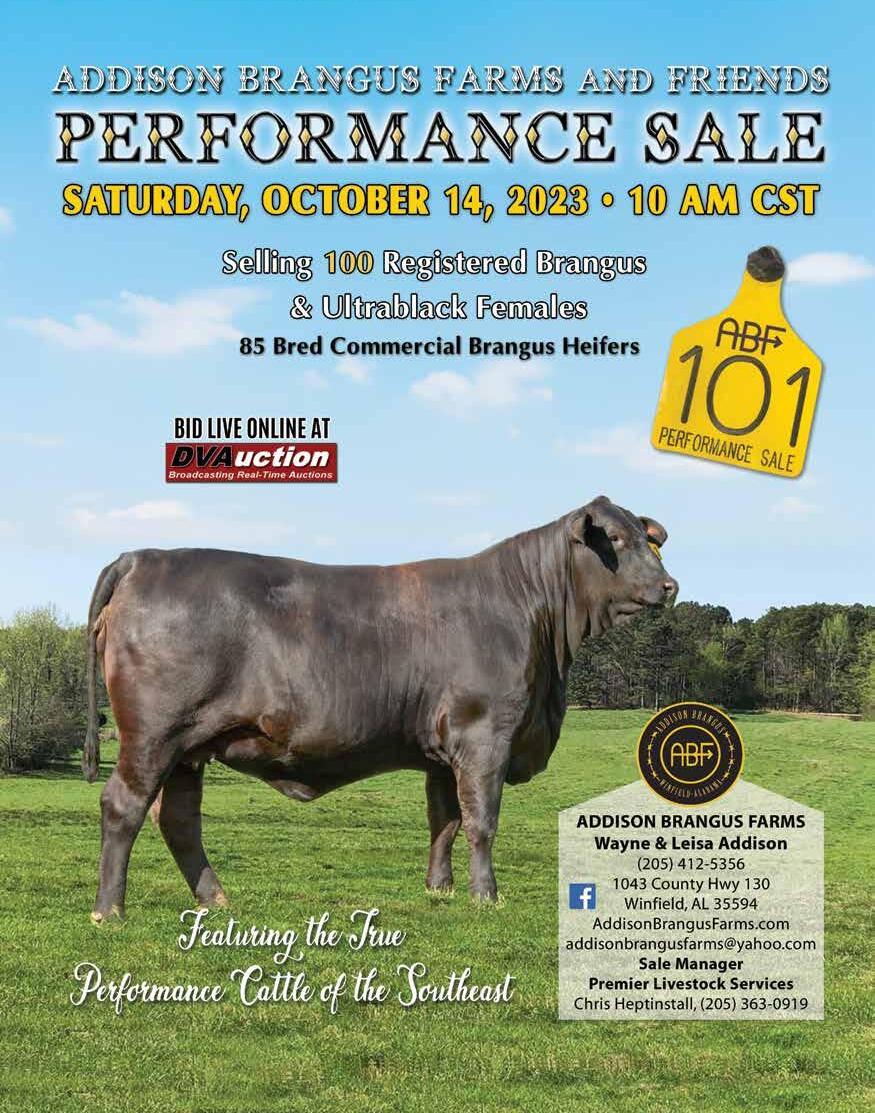
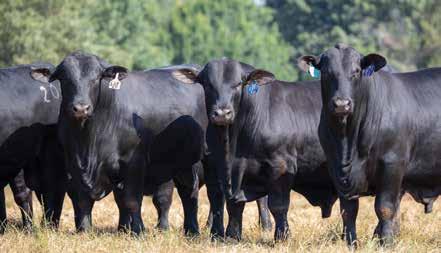




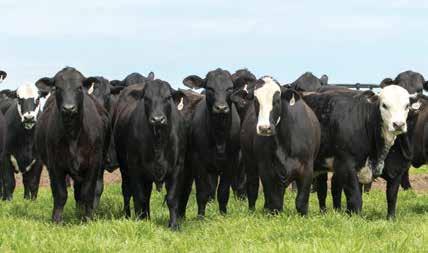

MARK COWAN 903-495-4522 • TODD HARVEY 386-288-8059 JUSTIN MATEJKA 903-521-1070 • JOE CAVENDER 903-571-1209 INFO@CAVENDERRANCHES.COM SCAN QR TO REQUEST A CATALOG OR VISIT CAVENDERRANCHES.COM OCTOBER 27-28, 2023 BRIGGS RANCHES - BLOOMINGTON, TX TRI-STAR BULL AND COMMERCIAL FEMALE SALE BRANGUS, UB & SANTA GERTRUDIS BULLS SAVE THE DATE! FRIDAY, NOVEMBER 17 COMMERCIAL FEMALE SALE – 12 PM REGISTERED FEMALE SALE – 5 PM DINNER TO FOLLOW SATURDAY, NOVEMBER 18 BULL SALE – 12 PM SCHEDULE OF EVENTS NOVEMBER 17-18, 2023 CAVENDER’S NECHES RIVER RANCH || JACKSONVILLE, TX 270 REGISTERED BULLS – BRANGUS, ULTRABLACK AND CHAROLAIS 80 REGISTERED FEMALES – BRANGUS AND ULTRABLACK 600 COMMERCIAL FEMALES – OPENS, BREDS AND PAIRS 19TH ANNUAL FALL PRODUCTION SALE
Future Herd Sires Selling


His dam is the $10,000 donor purchased by Dane McGinnis last fall. She has calves on the ground for us by Big City, Currency, Land Line, Big Lake and Tradition. His full brother sold last spring for $6,500.
Nov ember 18 th



He is one of two maternal brothers to the $70,000 New Standard 817J3 we own with TTT Brangus. This big bodied and powerful prospect is sired by Blount.
He is sired by the big growth and REA, Never Surrender. Two full sisters averaged $5,500 this spring and last fall. His dam, now owned by Fenco Farms, has generated over $42,000 in our herd. His granddam is a member of the Rita tribe and generated over $126,000 in her lifetime.
He is sired by Oracle and is the result of our accelerated genetic progress. His dam was one of the top heifers in her calf crop and produced this ET son at 2 years of age. Her maternal sibs have generated over $42,000 in sales.
He is a massive full brother to the $16,000 CB Growth Fund 2051G11 we own with Draggin’ M and a maternal brother to the $37,000 Masterpiece. His maternal sibs have fetched over $230,000 in sales.
His sire, the $45,000 SF Brickhouse 909D9 who we owned with Schmidt Farms has sired over $675,000 in progeny in our program and left countless daughters in our herd. His dam is a Three D daughter tracing back to the Blackcap family of Angus females.

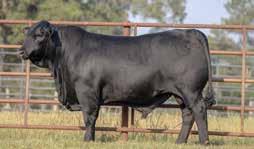
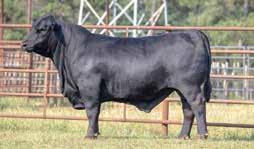
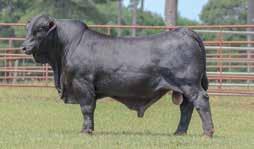

REQUEST YOUR CATALOG AT CAVENDERRANCHES.COM
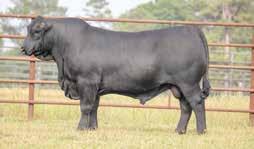
MARK COWAN 903-495-4522 • TODD HARVEY 386-288-8059 • JUSTIN MATEJKA 903-521-1070 • JOE CAVENDER 903-571-1209
468K10 CED 5.7 BW -0.7 WW 36 YW 67 M 5 TM 23 CEM 3.07 SC 1 REA 0.39 IMF 0.13 FT 0.022 TERM INDEX 3.33 FERT INDEX 2.62 REG: UB10503698 | LAND LINE X THREE D 302A
817K8 CED 1.4 BW 1.4 WW 40 YW 66 M 3 TM 23 CEM 4.2 SC 0.66 REA 0.36 IMF 0.22 FT 0.021 TERM INDEX 3.27 FERT INDEX 2.7 REG: UB10503769
BLOUNT X THREE D
|
1373K10 CED 6.3 BW 0.4 WW 45 YW 89 M 5 TM 28 CEM 3.78 SC 0.8 REA 0.64 IMF 0.13 FT 0.02 TERM INDEX 4.35 FERT INDEX 2.94 REG:
UB10503957 | NEVER SURRENDER X THREE D
CED 2.2 BW 0.8 WW 58 YW 93 M 12 TM 41 CEM 2.35 SC 0.91 REA 0.73 IMF 0.41 FT 0.054 TERM INDEX 5.25 FERT INDEX 2.46
2051K13
REG: R10503706 | ORACLE X POWER PACK
CED 6 BW -0.8 WW 47 YW 78 M 8 TM 31 CEM 2.67 SC 0.55 REA 0.56 IMF 0.38 FT 0.028 TERM INDEX 4.62 FERT INDEX 3.72
2051K7
REG: UB10503770 | CAPITAL GAIN X CONSENSUS
CED 2.4 BW 0.7 WW 48 YW 76 M 4 TM 29 CEM 5.19 SC 1.09 REA 0.65 IMF 0.2 FT 0.01 TERM INDEX 4.01 FERT INDEX 2.11
111K
REG: UB10505192 | BRICKHOUSE X THREE D
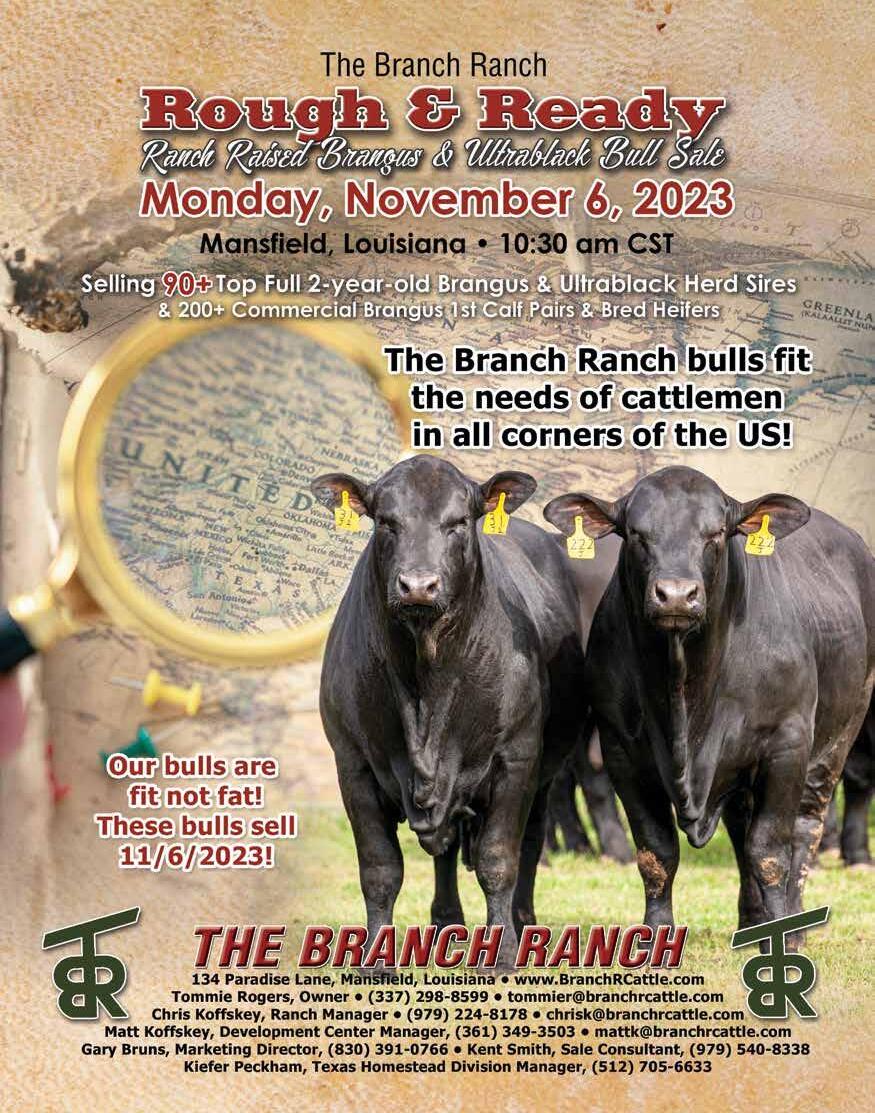
The 2022 National Beef Quality Audit Showed Improvement, Lost Opportunities Raising The Bar, Then Exceeding It
by Burt Rutherford
- this article is reprinted with permission from CALF News
We’re getting better. A lot better, in fact. But much like a football coach who, even when the team wins, isn’t satisfied with the performance, the 2022 National Beef Quality Audit (NBQA) not only documented where beef producers are winning, but where their performance still can be improved.
The NBQA began in 1992 and is conducted periodically to determine how the beef business is improving over time. These audits have delivered a set of guideposts and measurements for everyone in the beef business, especially beef producers, to determine quality conformance of the U.S. beef supply. Prior to the 2022 audit, the previous audit was conducted in 2016.
First, the caveat: The 2022 NBQA, with results released earlier this year, was conducted under extraordinary circumstances, primarily drought and supply backlogs because of COVID-19. Because of the remarkable disruptions those two factors produced, the data are more a snapshot at a particular point in time than part of a continuum.
Nonetheless, the data are important and instructive as beef producers continue to produce a safe, nutritious product that consumers demand.
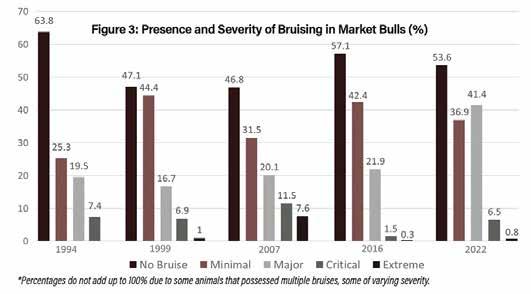
“Looking at the data collected from this National Beef Quality Audit, I think the quality of beef being produced today and the efficiency by which it’s being done has improved markedly,” says Trey Patterson, CEO of the Padlock Ranch and chair of the Beef Quality Assurance (BQA) Advisory Group. “I think that
shows that the efforts that have been put in place in the past to make strides in these areas has yielded positive results for the industry.”
Another pearl of knowledge the audit revealed is that beef chain market segments no longer consider food safety as a purchasing criterion. “It is a basic expectation,” Patterson says.
“So we’ve really set a new bar for ourselves that the beef will not only be high quality, but it’ll be safe,” Patterson says. “I see that as a real positive.”

19 FALL 2023 FRONTLINE BEEF PRODUCER
Market Cows and Bulls
Just like fed cattle, the quality of beef harvested from cull cows and bulls has improved, Patterson says. “The efforts we’ve put into that in the past, a lot of that through Beef Quality Assurance (BQA), have yielded results. We’re getting better.”
Generally, cull cows and bulls mainly produce ground beef. However, the beef supply chain has realized some market cows and bulls can yield valuable primals that can be fabricated and sold as retail cuts to restaurants, which increases the value of those animals.



What’s more, a very large majority of cattle and carcasses surveyed had no instances of knots (98.2 percent) or injection-site lesions (97.1 percent) visible on the exterior carcass surface. That indicates great strides in the number of producers who are trained in BQA practices and are administering injections properly, according to an NBQA fact sheet.
And, Patterson says, “Transportation is getting better,” something he attributes to the addition of Transportation BQA (BQAT) to the program. In fact, nearly 93 percent of livestock haulers interviewed were familiar with the BQAT program, and 91 percent were BQAT certified, according to audit results.


That’s reflected in the increased number of trailer loads that allot sufficient space as outlined in the industry’s Animal Handling Guidelines, according to an NBQA summary.
Then there’s this: “We also saw that the incidence of foreign objects are still a problem in beef,” Patterson says. While that’s something that the industry may not want to talk about, he thinks the issue needs to be addressed, particularly when it comes to birdshot.
SATURDAY, DECEMBER 9, 2023 – 10:00 AM CAROLETA RANCH – WEIMAR, TEXAS

RANCHES WHERE THEY WERE RAISED
In fact, 100 percent of the cull cow and bull packing plants that participated in the audit reported finding birdshot and buckshot, not just in the hides, but in the muscle as well. Other foreign objects, such as broken needles, wire and darts, all came in at almost 19 percent each.
What’s more, 53.3 percent of surveyed plants reported instances of supply chain segments finding foreign objects in their products. While plants have installed metal detectors and x-rays to catch and remove foreign objects before products leave the plant, this remains an issue throughout the supply chain, according to an NBQA summary.
“We should not have any tolerance for that,” Patterson says. “That creates added waste in our industry.” While he’s not sure zero is possible, he thinks more BQA training and education can reduce the incidence of all foreign objects in beef, particularly birdshot. “There is no reason for it.”
FALL 2023 FRONTLINE BEEF PRODUCER 20
Sale Directors: Joe W. Fuller 979-255-7747 joe@texasdrovers.com Bunge Halla 979-758-4535 bunge67@icloud.com REQUEST A CATALOG: texasdrovers.com
SELLING
100
BRANGUS & ULTRABLACK BULLS PLUS 25 ANGUS BULLS
400 COMMERCIAL BRANGUS & BRAFORD PAIRS, BRED AND OPEN FEMALES STRAIGHT FROM THE REPUTATION
WALLIS, TEXAS KAECHELE RANCH EST. 1899 FEATURING ACE BULLS AND KAECHELE RANCH FEMALES
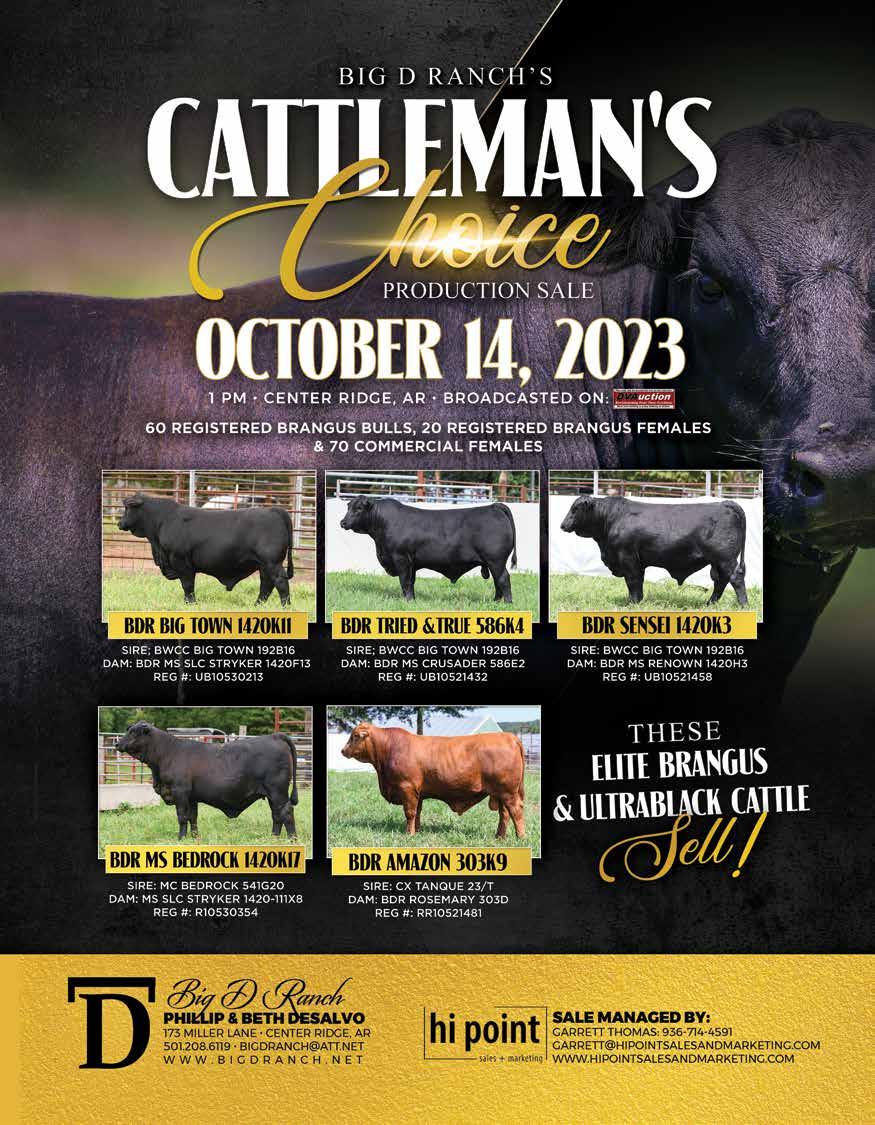
Another finding and an indicator of how drought affects every part of the beef business was the highest percentage of light-muscled cull cows and bulls across all audits for the past 27 years. The 2022 audit found an increase in the percentage of cattle categorized as too thin, according to body condition scores. “Producers should consider market cows and bulls and their eligibility for feeding prior to harvest in order to increase their muscling and finish, thus returning more revenue,” according to an NBQA factsheet.
Cull cows and bulls represent a significant part of an operation’s cash flow. Managed and marketed correctly, they can be a profit center. While the 2022 NBQA highlighted a number of areas where the beef business has made positive strides, it also identified some lost opportunities.
“Declines in market cow and bull quality such as live animal defects, carcass defects, and the market or sale of animals unfit for consumption leave dollars on the table for cattle producers,” reports an NBQA summary. “In order to capture these lost opportunities for economic return, producers should abide by the ‘Three Ms’ – manage cattle to minimize defects, monitor the health and condition of their cattle, and market their cattle in a timely manner.”
Fed Cattle
Another takeaway from the 2022 NBQA is the increased use of electronic identification (EID) ear tags in cattle entering the fed cattle marketing chain, Patterson says. That’s another positive.
“One thing as an industry we need to continue to work on is traceability. What I think we all saw, going through COVID in human beings, is not only how fast infectious diseases spread, but how fast regulations follow,” he says. “Let’s get on top of this as an industry and get traceability figured out.”
Traceability, however, is only part of the larger picture. Patterson also sees a need to focus on the biosecurity associated with containing a disease outbreak “so that we can be able to thwart having a situation like humans went through with COVID-19,” he says.
In fact, cattle health across the board is an issue. “The health of feedlot cattle has got to continue to be a focus,” Patterson says. “Preventative health strategies that set us up for success, continued efforts in research and in practice to improve feedlot health needs to be addressed.”
While that has been a focus for a long time, the beef business can’t take its foot off the accelerator “because it continues to be a challenge in the feedlot industry.”
The 2022 NBQA showed the highest percentage of Prime and Choice fed-cattle carcasses since the audit began. In the 2022 audit, 76 percent of carcasses hit Prime or Choice, compared with 71 percent in 2016 and 61 percent in 2011.
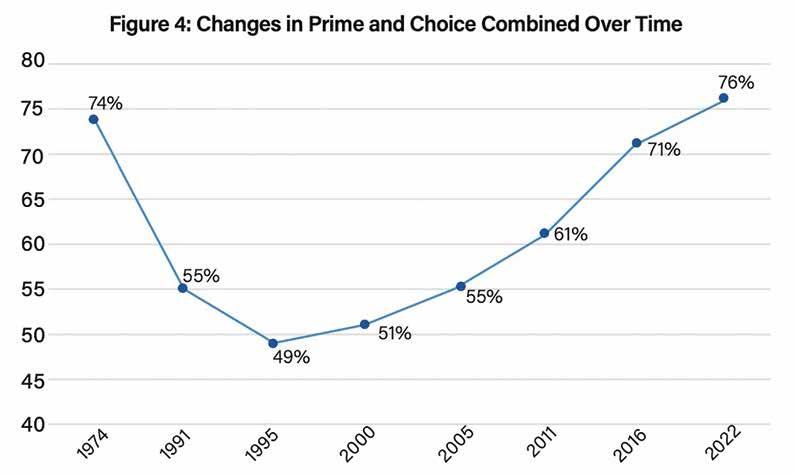

FALL 2023 FRONTLINE BEEF PRODUCER 22
OUT WORK• OUT LAST
Makes bull
Bulls that help your bottom line.
Town Creek Farm bulls hold up, out-work, out-last and out-perform their peers. Fewer bulls to replace. Thirty-years of proven maternal performance bulls.
√ Select your bulls from proven Brangus (selection of 1st gen 3/8-5/8 bulls) Ultrablacks, Vigor Max™ (Brahman x Angus half-blood), 3/4 Blood and Brahman Bulls.
√ Opportunity to buy bulls from a program that culls EVERY open female and EVERY female that doesn’t bring a calf to weaning pens.
√ Cattle fit the commercial world, based on good cows behind our bull offering.
√ Maternal bulls develop superior replacement heifers that are fertile, long- lasting and have good udders.
√ Offering full two-year-old bulls.
√ Large selection of calving ease bulls for use on heifers.
√ User-Friendly bulls.
√ Bulls are hard, ripped and toned; ready for breeding pastures.
√ Managed to be disease-free. ALL bulls are out of Johnes-free cows.
√ Environmentally adapted and acclimated bulls that withstand heat and humidity.
√ Longevity – of breeding bulls and of their daughters.
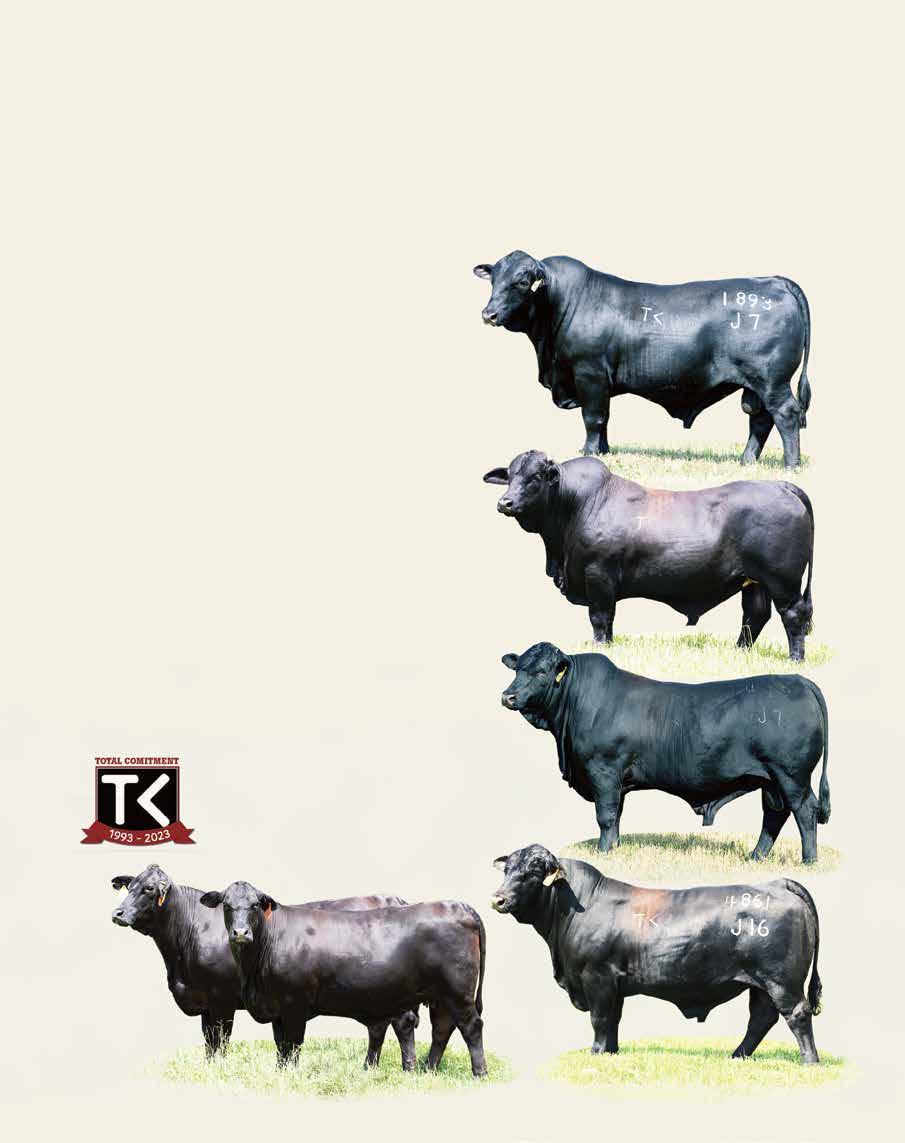
√ Fertility is our top priority. All other traits follow fertility.
√ Genetics developed and proven for more than 30 years.
√ Your source of maternal bulls.
Town Creek Farm Sale
buying
Discover the
Go to www.TownCreekFarm.com to request a sale catalog. TOWN CREEK FARM Milton Sundbeck, Owner 32476 Hwy. 50 East, West Point, Mississippi 39773-5207 Joy Reznicek Sundbeck (205)399-0221 Joy@TownCreekFarm.com Cody Glenn (601)508-8689 Cody@TownCreekFarm.com
more affordable.
Difference.
THESE COMMERCIAL BRANGUS HEIFERS SELL.
at the ranch near West Point, Mississippi 150 Brangus, VigorMax™ Half-Blood Bulls, and Ultrablack & Plus First Gen Brangus Bulls 225 Commercial Brangus Bred Heifers
Saturday, October 21, 2023 • 12 noon
30th Anniversary
4626J SELLS –VIGORMAX™ BULL
4861J16 SELLS –BRANGUS BULL
419J7 SELLS. FIRST GENERATION 5/8-3/8 BRANGUS BULL
1893J7 SELLS –BRANGUS BULL
While that can partly be attributed to better genetics, it also was the result of heavier carcass weights. That had a number of drawbacks.
“One of the things we saw in this audit is that mobility scores were down some in fed cattle,” Patterson says. According to audit data, nearly 92 percent of cattle received a mobility score of 1, with the animal walking easily and normally with no apparent lameness. That is down from 97 percent in 2016 and is attributed to larger cattle and longer time in transport.
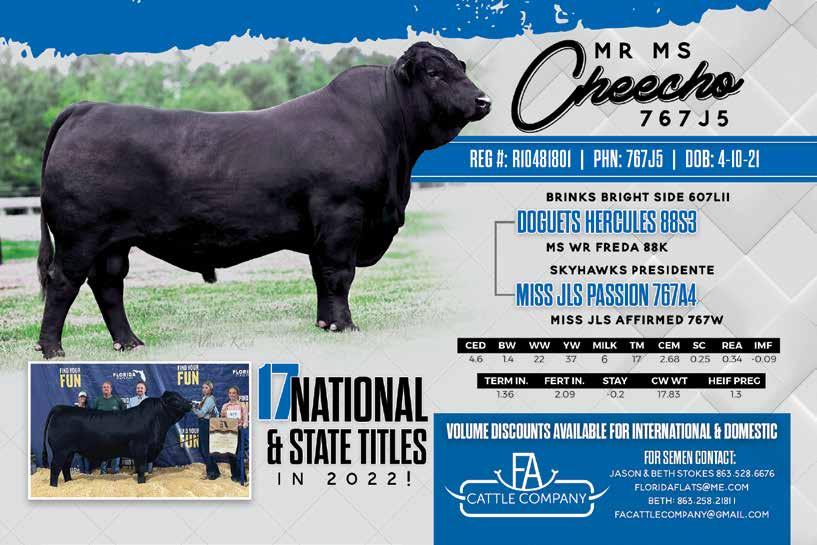
There was an increase in the number of Yield Grade 4 and 5 fed-cattle carcasses, according to audit results, as well as an increase in the incidence of carcass bruising in both fed cattle and cull cows and bulls. In fact, the 2022 audit showed the highest frequency of carcass bruising, at 52.3 percent, since the audits began. Since heavy carcass weights result from bigger live animals, this issue will likely need to be addressed through facility and trailer design as well as cattle handler training, according to an NBQA fact sheet.
Where Do We Go From Here?
“I think, No. 1, getting involved with Beef Quality Assurance,” Patterson advises. He believes that’s the path that beef producers will take to continued progress. “Remember back to the early audits where injection-site lesions were such a problem and there were quality issues? Look at what we’ve done with those,” he says. “We’ve improved quality. Carcass defects continue to go down.” But there’s always room for improvement. “There’s always going to be a bar somewhere we need to raise,” he says. “You never can say that we have arrived. And I think BQA has been successful in the past in raising those bars and getting above those bars on a lot of issues.”
Editor’s Note:
For more information on the 2022 NBQA, visit bqa.org
FALL 2023 FRONTLINE BEEF PRODUCER 24
“There’s always going to be a bar somewhere we need to raise.” – Trey Patterson
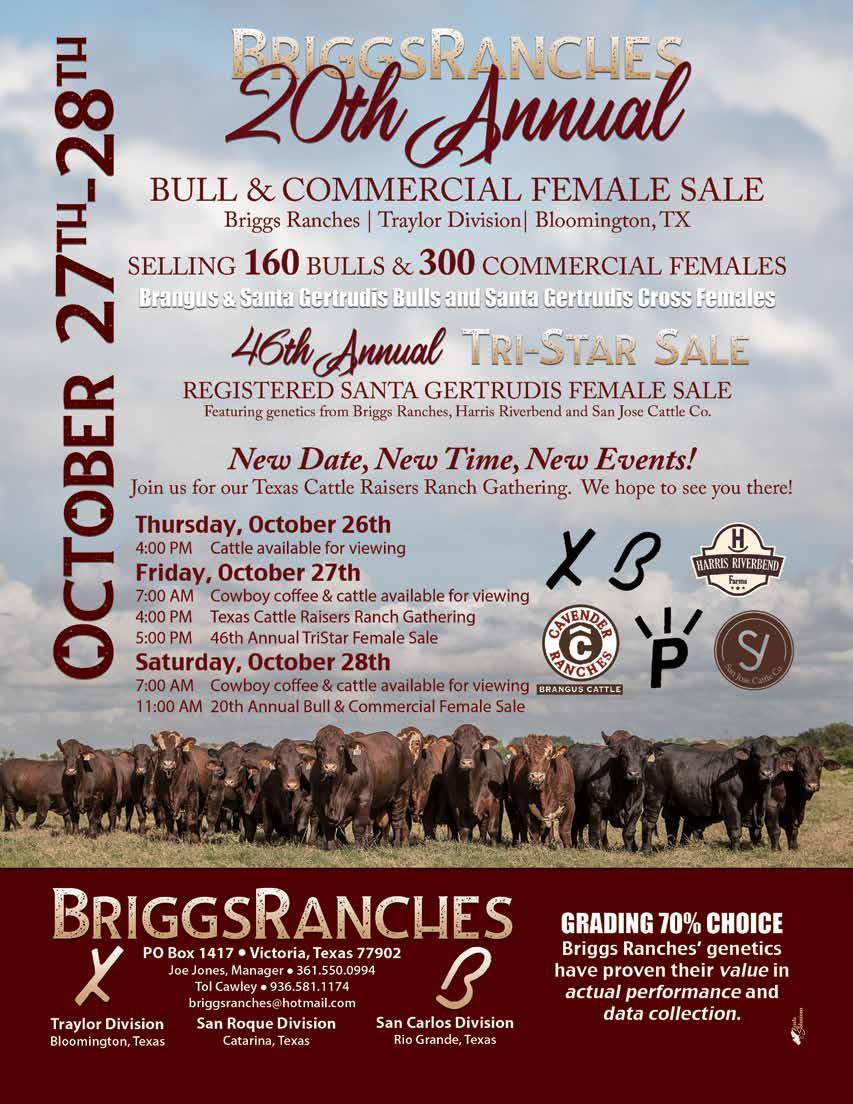
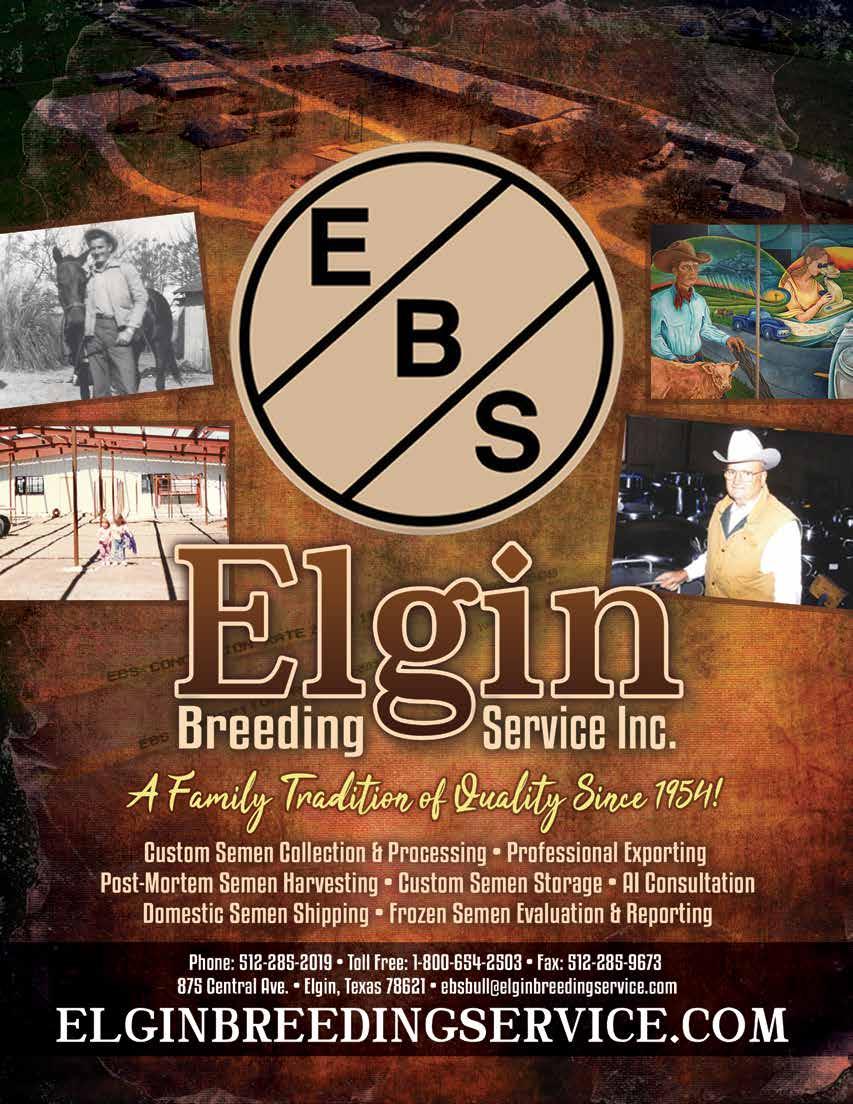
UPDATE from the Field
 by Kyle Caldwell,
by Kyle Caldwell,
As I tell people all the time, I have one of the best jobs in the world. I have the chance to travel to near every corner of the United States, see the best cattle on some of the most picturesque ranches. I am coming up on my one-year anniversary with IBBA in November and by my count I have visited registered and commercial producers in 14 states so far (my goal is at least 20 states by year two). I crossed 2 more states off the list this past month where Brangus and Ultra cattle are making a difference on cattlemen’s bottom line and adding peace of mind in big ranch country: Nevada and Oregon.
I had the distinct pleasure of riding around with Vern Suhn a few weeks ago when we went up for the Superior Livestock Video Royale sale in Winnemucca, Nevada. Don’t get me wrong, it was hot in the high desert of Nevada, but I haven’t seen humidity lower than 98 since I moved to Louisiana. It was 7% humidity while we were there and averaging 65 degrees in the morning; I almost felt bad for my wife sweating back home in Natchitoches… Almost.
We had several meetings throughout the week both at the Superior Sale as well as ranch visits, but one that stuck out to me was the T Quarter Circle Ranch in Winnemucca, owned and operated by Frosty Tipton, his wife Nancy, and children Guy and Karla Tipton. We had two days to ride around with Frosty and Guy, but if we had 2 weeks it probably still would not be enough to cover the whole ranch or hear every story. If every cattleman were as much of a student of range management as Frosty, then we would all
be better for it. Every plant, weed, and insect we drove past Frosty could name exactly what it was, its relative nutritional content and in the case of invasive plants or insects, what year they were introduced to the United States. In between trying to immerse myself in the desert ecology lessons and Basque sheep herding stories, the harsh environment these cattle survive in is astonishing. The land includes expansive valleys surrounded by mountains, five miles to the nearest water source across some of the rockiest terrain I have ever seen and beyond that, thousands of acres of open range owned by the Bureau of Land Management. Cattle, especially the bull battery, need to have a little more umph to cut the mustard out there. Feed efficiency and ease of management comes at a premium, and cattle cannot be hesitant to climb a mountain or venture far from the water trough in 100+ degree heat to breed or find something to eat. For those of us in the Brangus business, that is music to our ears.
Our visit to the Warner Valley in Oregon produced some similar conversations with commercial cattlemen Joe Lane and Terry Cahill. While water management did not seem to be as critical, survivability in the rough terrain was paramount. Much like Frosty’s experience with other breeds, Joe and Terry were disappointed with the longevity of their current bull battery and have been trying out some Ultrablack bulls selected by Vern to see how they would hold up. While we did not get to see the bulls in person, Joe assured us they were doing their job and holding up very well, even surviving the cold much better than expected. Terry recounted some of his experiences with other Bos indicus breeds in the region,
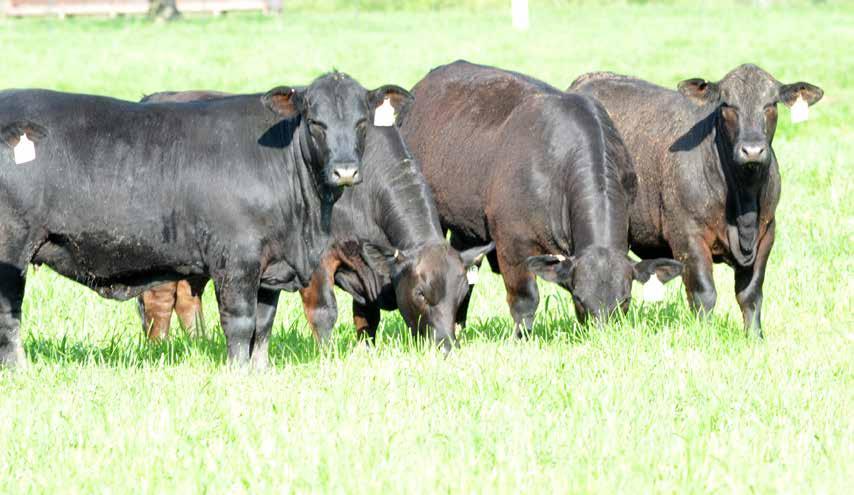
27 FALL 2023 FRONTLINE BEEF PRODUCER
| UPDATE FROM THE FIELD |
International Brangus Breeders Association (IBBA) Director of Field Services & Strategic Projects
saying that he loved the fertility, hardiness and longevity that came with Bos indicus-influenced cattle, but would also be interested in making calves more uniformly colored. This echoed sentiment that Vern and I heard at the Superior sale in Winnemucca, and my takeaway is this: there is tremendous opportunity for Brangus to succeed in places like Nevada, Utah, Idaho and Oregon and many are already using eared genetics. Our goal is to convince them to use the right kind of ear to add the most value to their program.
Next on the docket was a trip to the Texas A&M Beef Cattle Short Course, a Breed Improvement Committee and Commercial Marketing Committee meeting in Lubbock and the TBBA Field Day at GKB Ranch in Desdemona packed into one week. Short Course is always a great opportunity to learn and connect with producers from a variety of ages and backgrounds. IBBA was in the good company of fellow Brangus breeders ACE Cattle, CDP Brangus, Cavender Ranches, The Branch Ranch and Oak Creek Farms.
I then traveled up to Lubbock and had the opportunity to sit in on a rancher panel with the Breed Improvement Committee and Commercial Marketing Committee. We sat down with the managers of T Bar Ranch, Spade Ranches, Bovina Feeders and several other experienced cattlemen to get their thoughts on Brangus and how we may
RECHARGE Your Bull Battery � SPANISH RANCH BULLS
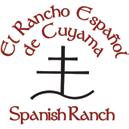
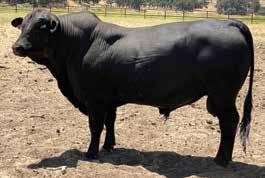
be able to improve our product. After presenting the latest data from the Brangus Value Project, we had some great discussion on where we are as a breed and things we need to focus on in the future. Everyone walked out of the room that night with a better understanding of Brangus in the larger beef industry. The manager of Bovina Feeders even said “I’d like to have a whole yard full of those!” after seeing a picture of one of the Brangus calves on feed for the Brangus Value Project. We then got up the next morning and met with Drs. Ryan Rathmann and Dale Woerner of Texas Tech University and listened to some very interesting up and coming research both were working on in the realm of increasing cow efficiency and how to better determine true red meat yield. Partnerships with institutions and industry leading researchers like Drs. Rathmann and Woerner are crucial for our breed to stay on the cutting edge. We ended the day by taking a tour of Cactus Feeders-Wrangler Feedyard in Tulia, Texas. At Cactus, committee members had the opportunity to learn more about feedyard operations and the benefits of marketing calves through retained ownership. As our breed continues to grow, seedstock producers need to be aware of every strategy possible to add value to their customer’s cattle to help set them and our breed apart. Every extra dollar that commercial producer earns as a result of their seedstock supplier helping them market cattle more effectively is a sales pitch to produce a repeat buyer.
After some morning meetings to wrap up the Lubbock trip, we all headed east to GKB Ranch in Desdemona, Texas for the TBBA Field Day. This event was certainly done “The GKB Way” with every part of the facility and event meticulously designed to function as smoothly as possible. The panel discussions were very informative, the BYOB (Bring Your Own Brangus) exhibit gave each breeder who brought some of their own cattle a platform to give a glimpse into what their program brought to the table. To top it all off, we even got to have a steak dinner with Brangus ribeyes sourced from Jeremy Jackson of Jackson’s Double J Brangus. It has been a couple of years since I’ve been on a collegiate meat judging team, but I remember enough to know these were premium Choice, some even Prime ribeyes. Yet another testament to the quality of product Brangus cattle
Next month we will be in the full swing of fall sale season. Be sure and check out upcoming sales in the ads throughout the magazine or check out the calendar of events in the back. If you are looking to add some vigor back into your herd with quality Brangus cattle, I would be more than happy to point you in the direction of your local Brangus breeder. Give your herd a leg up. Go Brangus.

FALL 2023 FRONTLINE BEEF PRODUCER 28
Range-ready, service-aged Brangus and Ultrablack bulls ready to go to work for you are available now private treaty at the ranch. Bulls also available at these upcoming sales: • California Breeders’ Bull Sale, Turlock, CA: September 30 • Western Stockman’s Market Bull Sale, Famoso, CA: October 14 • Great Basin Bull Sale, Fallon, NV: February 17, 2024 NEW CUYAMA, CALIFORNIA AJ DOIRON PAMELA DOIRON 805-245-0434 doiron@spanishranch.net www.spanishranch.net FOLLOW US FOR BULL DETAILS @spanishranchcuyama
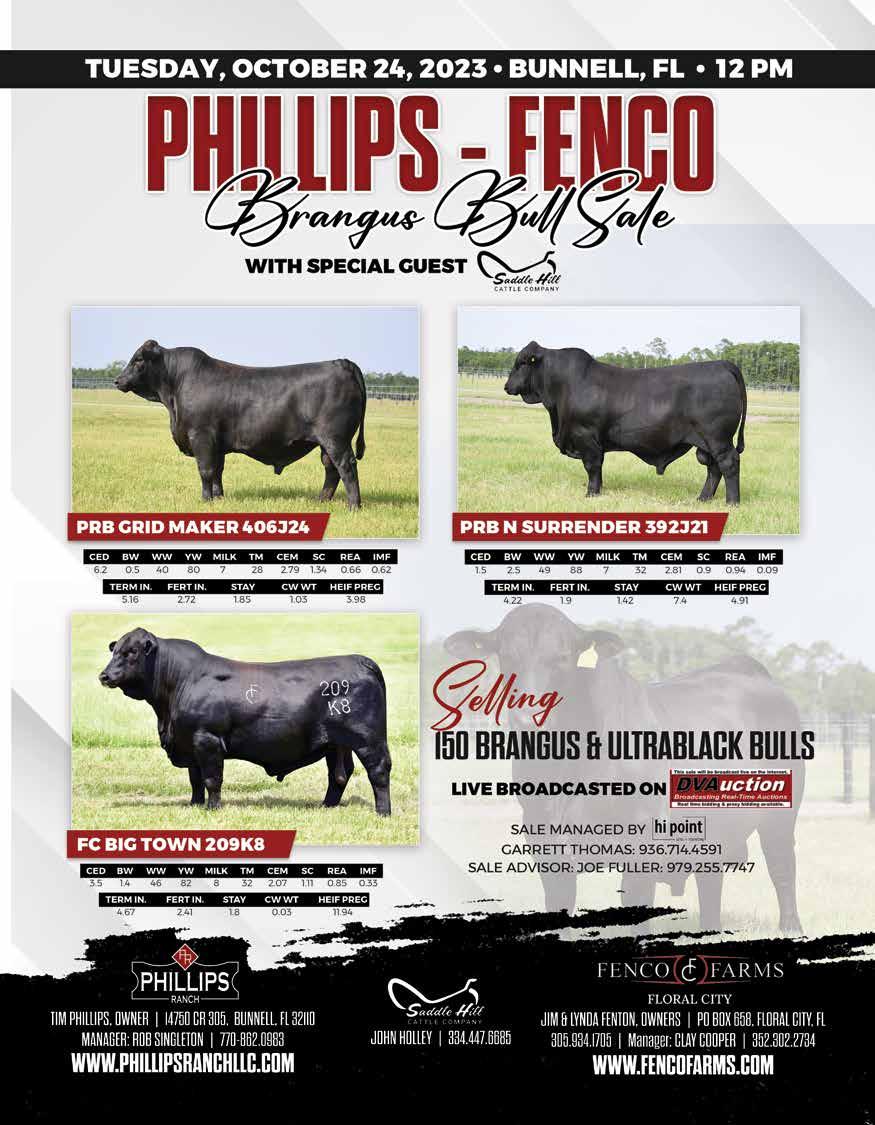
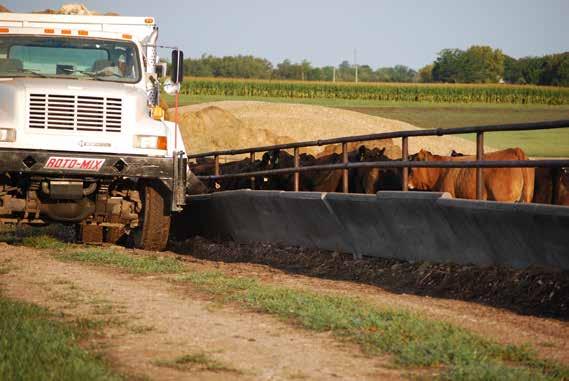


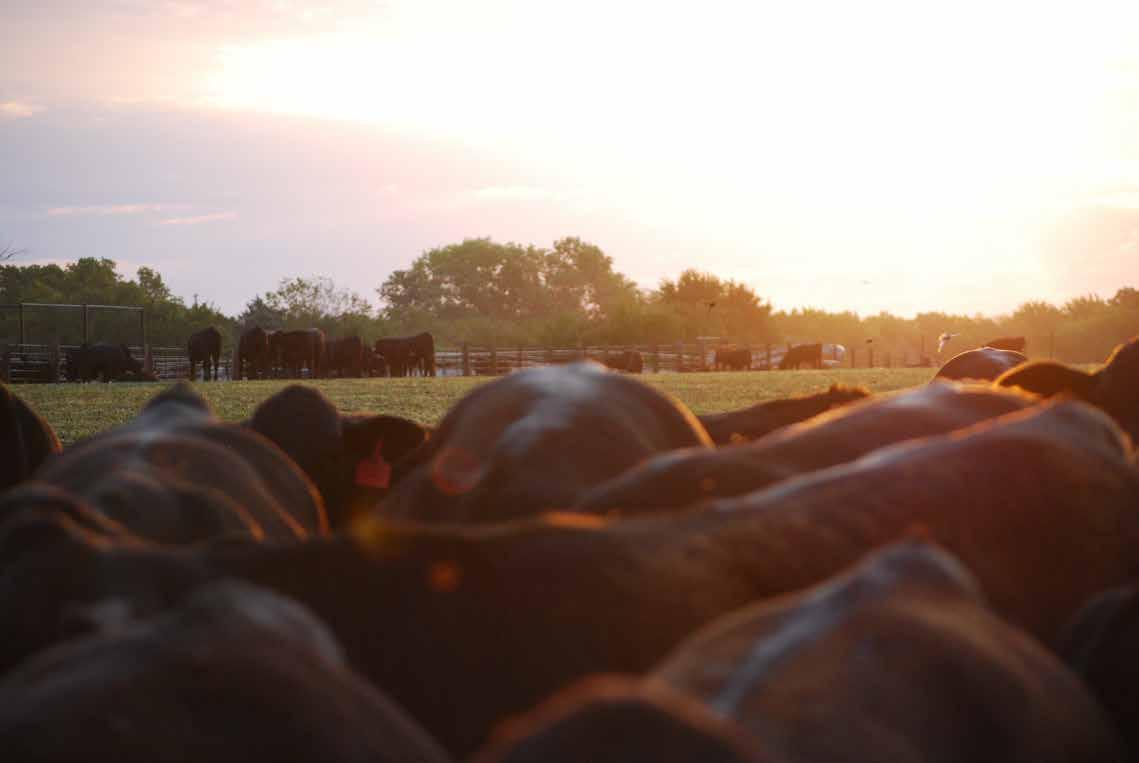
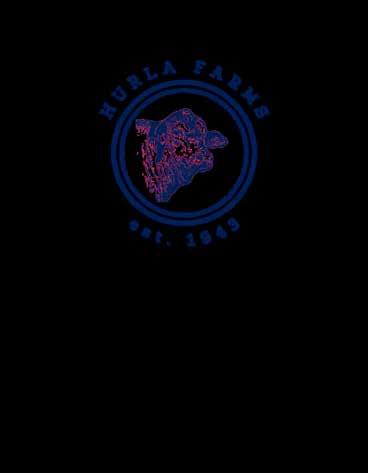
FEEDLOT
FAMILY OWNED & OPERATED IN PAXICO, KANSAS C U S T O M F E E D I N G B R A N G U S G E N E T I C S S I N C E 1 9 8 5 CONTACT US (785) 207-2360 michael@hurlafarms.com V i n c e n t H u r l a R o y H u r l a M i c h a e l H u r l a C h a d H u r l a J u s t i n H u r l a
HURLA FARMS HURLA FARMS
FEEDLOT
WHAT IS A BULL WORTH? CATTLEFAX TRENDS

This question is never ending and is going to be different for everyone depending on their goals and objectives. Bull prices are very subjective. The simple answer is a bull is worth what someone is willing to pay for it. Today, due to technological advancements, the genetics and progeny potential outcomes are more predictable for a sire or a mating than they ever have been. That in and of itself may be a large portion of the price disparity seen in bull values on an annual basis. Producers often wonder, what differentiates a $100,000 bull from a $2,500 bull? The bottom line is it will always be dependent upon a combination or variation of genetics, pedigree, phenotype, performance, and EPDs, but not all. It is also about how much additional revenue the bull can potentially generate. An expensive bull in a seedstock environment is different from what is considered an expensive bull in a commercial cow-calf environment. In a seedstock environment, bull values will be highly dependent upon the genetic potential for breed improvement in addition to the potential semen sales, possibly for years to come. In a commercial environment, values will be highly driven by the progeny’s expected performance at certain stages of production, longevity, maternal or terminal advantages, salvage value, and perhaps often not given enough credit are the expected calf values for the projected number of breeding seasons for that sire.
The last point is also often discussed when buying replacement females. What is the expected value of the progeny for that bull or female during their expected productive lifetime? For bulls, progeny values are typically more predictable since, most of the time, their longevity in a herd is shorter than females. Therefore, the number of years or calf crops and the length of time to predict prices is shorter. Not only is having a projection of progeny values for subsequent years important, but also what are your objectives? Will you be breeding heifers or is your operation in big
country with short labor availability and birthweight is a main criterion? Are you selling calves right off the cow at weaning and birth to 205-day growth spreads are important? Perhaps your goal is to produce replacement females and maternal characteristics and traits take priority. Retaining ownership through backgrounding or taking them to grass will place a higher priority on pre- and post-weaning growth potential. Retaining ownership through the feedyard will place priorities on not only growth and efficiency but carcass merit in order to capitalize on grid premiums. Whatever stage of production you will own the calf crop through will likely place a higher emphasis on what you desire from a bull.
That said, to be successful in this business today your calves better be adequate to excellent in all stages of production. The business is significantly more sophisticated. Your cattle gain a reputation for either excelling or disappointing and your name is attached to them. As a result of that, so is the seedstock operation or bull producers’ reputation at stake. The adage that most people have heard forever is that the value of a bull is worth the value of five calves from the previous calf crop. The long-term CattleFax data largely supports that notion. But the value of calves can change quickly, particularly at this point in the cattle cycle. So, defining your objectives becomes more critical to your bull buying decisions.
For example, if you are selling your calves at weaning half of the calves, in theory, will be heifers. Heifer calves typically do not weigh as much as their steer mates and do not sell as high. This must be factored into the overall equation. But if you are producing replacement quality heifers and the industry is in an expansion phase, they may sell as high or higher than their steer mates. If you are backgrounding your calves with the intention to add 250-300 pounds, that weight is worth significantly more this year than it was last year, but will it be in subsequent years for that bull’s calf crops? Last winter, the
continued on page 34
31 FALL 2023 FRONTLINE BEEF PRODUCER
| CATTLEFAX TRENDS |



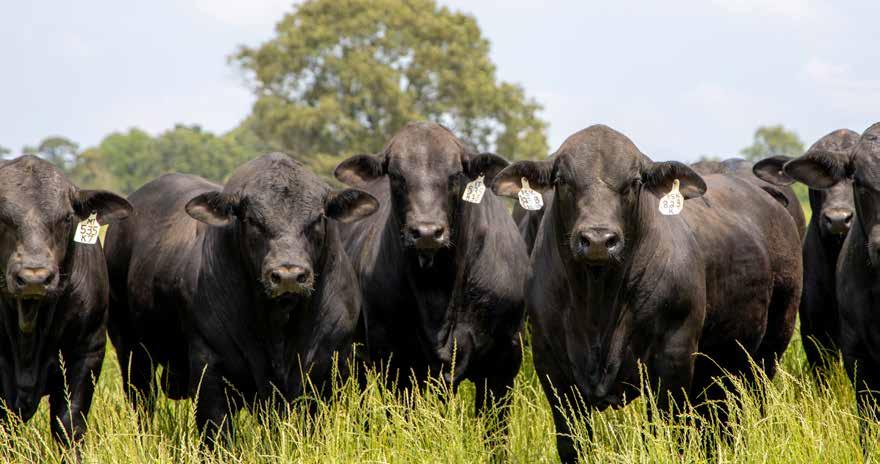
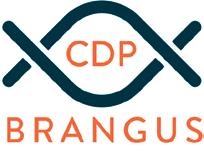



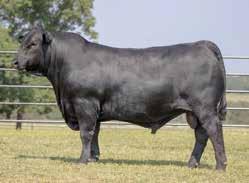
10K10 | DYNAMIC X RESOURCE 10K7 | DYNAMIC X RESOURCE 10K8 | WINDFALL X RESOURCE CRAIG GREEN 870-834-1976 Craig@cdpbrangus.com GRADY GREEN 870-314-3673 Grady@dragginmranch.com www.cdpbrangus.com 870-834-1976 Future Sale Dates: March 22, 2024 @CDP Brangus 60K23 | N SURRENDER X BASIN LUCY 60X CED BW WW YW M TM SC REA IMF TERM INDEX FERT INDEX 6.2 0 49 85 1 26 0.96 0.76 0.48 5.04 1.86 60K25 | DYNAMIC X BASIN LUCY 60X CED BW WW YW M TM SC REA IMF TERM INDEX FERT INDEX 3.9 2 56 102 3 31 0.75 1.06 0.46 5.81 2.55 CED BW WW YW M TM SC REA IMF TERM INDEX FERT INDEX 6.2 0 49 84 1 26 1.54 0.92 0.66 5.61 2.32 60K26 | DYNAMIC X BASIN LUCY 60X NOVEMBER 15-16 FALL PRODUCTION SALE 175 Brangus and Ultrablack Bulls 75 Premier Brangus and Ultrablack Females 300 Commercial Females
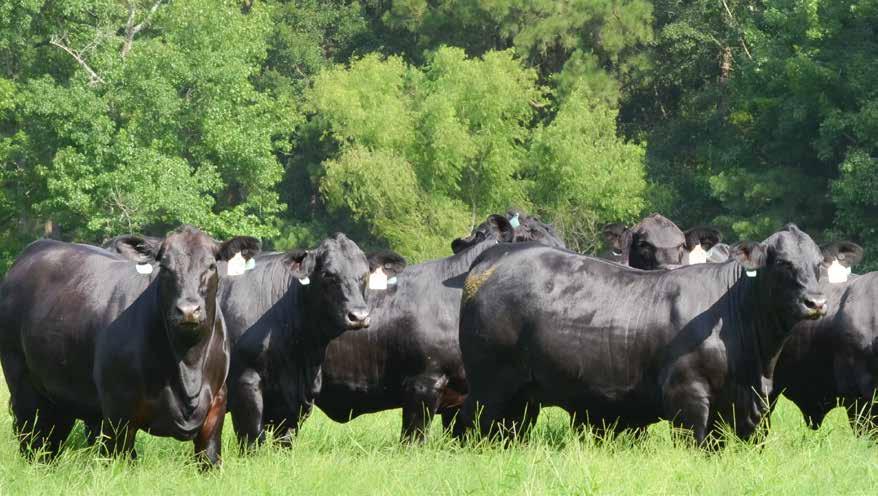
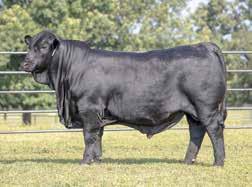

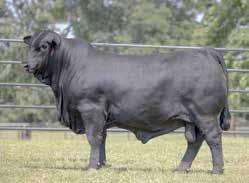
DRAGGIN’ M RANCH EL DORADO, AR CONSISTENT DATA-DRIVEN PERFORMANCE AT C ONSISTENT • DA TA - DRIVEN PERFORMANCE CDP BRANGUS NOVEMBER 15-16 EL DORADO, ARKANSAS 175 Brangus and Ultrablack Bulls 75 Premier Brangus and Ultrablack Females 300 Commercial Females CED BW WW YW M TM SC REA IMF TERM INDEX FERT INDEX 5.9 1.4 38 75 9 28 0.3 0.45 0 3.21 2.16 535K4 | N SURRENDER X CORONADO CED BW WW YW M TM SC REA IMF TERM INDEX FERT INDEX 9.6 -1.4 21 40 10 21 0.62 0.35 0.2 2.43 2.67 795K10 | BIG TOWN X CORONADO CED BW WW YW M TM SC REA IMF TERM INDEX FERT INDEX 9.7 -1.4 21 40 10 21 0.62 0.35 0.2 2.43 2.67 795K12 | BIG TOWN X CORONADO
Feeder Cattle Index was near $180/cwt., this year, the winter feeder futures market is implying feeder steers will be worth $250/cwt. That is the equivalent of $560 more per head. If a bull sires 25 calves, that is $14,000 more than last winter feeder cattle prices. The CattleFax Cow-Calf Survey data results indicate that producers who pay more for bulls sell calves for higher values, and more of them retain ownership to a phase past weaning to take advantage of the value of those genetics. Survey participant calf values the past three years indicate that for every additional $2,500 spent for a bull, the average calf price increased $75 per head. Over a three-year period, if that sire produces 75 head of calves, that alone is worth $5,625. A 125 percent return on the money. Bulls purchased last fall and this past spring are going to look cheap compared to this fall and next spring prices. But there were also many mitigating factors involved. The drought was drastic and still is today in many areas. The beef cow herd is 2.8 million head smaller than it was at the most recent cycle peak in 2019, and over 1 million head fewer than it was in 2022. Feed supplies were short, and prices were high. Also, calf prices were $500-$600 per head less than what is expected this year. So, there were fewer cows to breed, feed was high, and calf prices were less. There are still fewer cows to breed, so the demand for bulls will likely continue to be somewhat hindered, but prices will advance significantly simply based on market conditions.
Using the historical correlation that average bull prices are largely in line with the value of five calves, based on the projection that U.S. average prices for 550-pound steers this fall will average near $275 and 500-pound heifer calves average 8 percent less on a dollars per hundredweight basis, suggests average bull values this fall, and next spring will average near $7,250+/-. Last fall’s calf prices would have implied bull values last
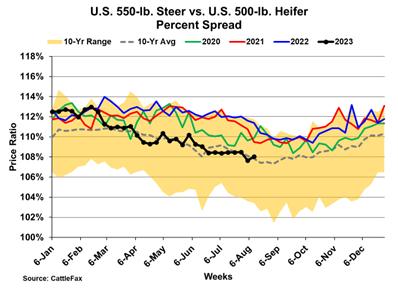
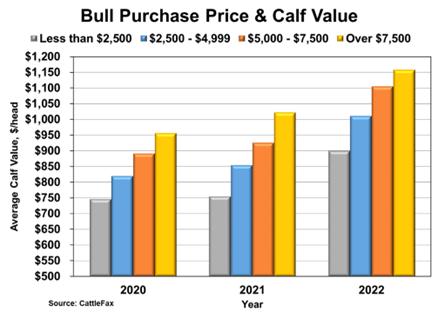
spring near $5,125, projecting a 41 percent increase this year. CattleFax expects calf and all cattle prices to continue to increase the next several years. When cow herd expansion
begins and there are more heifers and cows available to breed, bull demand and prices will continue to advance as well. Preparing your budget and bull selection criteria and objectives for your bull battery needs becomes more important in the coming years as the capital requirements increase. Bulls are a significant cost to an operation, but with the right selection for your objectives they also have the potential for high returns.
FALL 2023 FRONTLINE BEEF PRODUCER 34 | CATTLEFAX TRENDS |

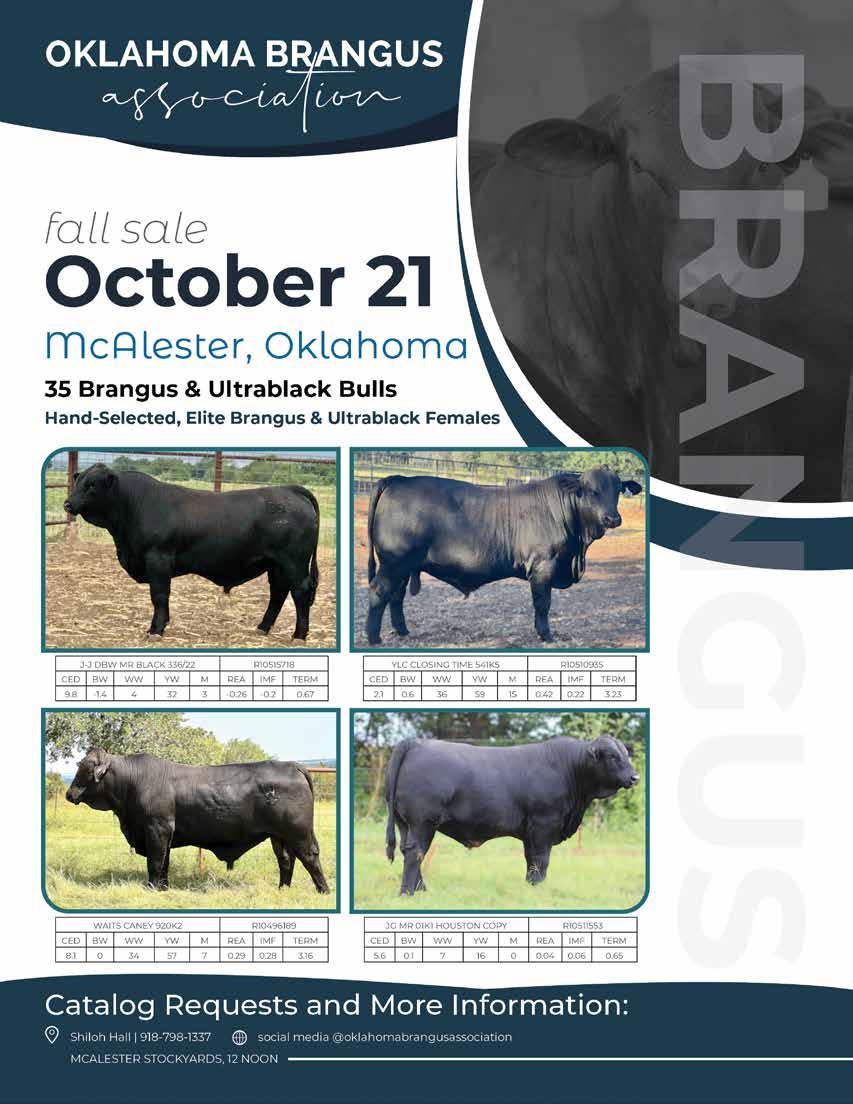


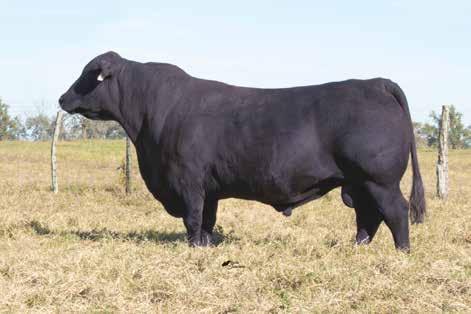
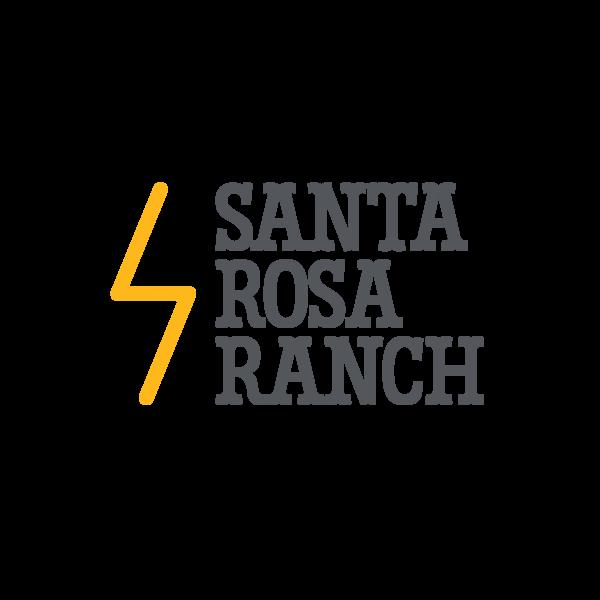




Results for the Second Round of the
Brangus Value Project
by Kyle Caldwell, International Brangus Breeders Association (IBBA) Director of Field Services & Strategic Projects
Three conclusions can be drawn from the results of the first and second round of the Brangus Value Project.
1. Brangus genetics produce feeder calves that can convert feed to pay weight at a rate rivaling top end feeder calves.
2. Brangus genetics produce carcasses capable of commanding a significant premium over the commodity live price.
3. Brangus genetics produce tender beef that even the most scrupulous steak connoisseur would be pleased with.
This project was first conceived by the IBBA Long Term Planning Committee in 2019 and was initiated in 2020. Steers from Round 1 were harvested in 2022. Steers from Round 2 were harvested in 2023. The results of Round 2 are summarized in this article.
Basic Project Design
• Seven Brangus and Ultrablack sires were progeny-tested using commercial cowherds from two cooperators from Oklahoma and Texas. A proven Angus sire was included as a reference sire. Each bull was bred A.I. to enough cows to produce 12-15 steer calves, which were born together and remained together in a contemporary group all the way through harvest.
• All calves were DNA tested to confirm sire.
• A total of 102 steers were placed on feed at Hy Plains Feedyard in Montezuma, KS in the fall/ winter of 2022/2023.
• For a portion of the feeding period, they were tested on GrowSafe, which measures individual feed intake. This allows for the calculation of feed efficiency, which is expressed as Residual Average Daily Gain (RADG).
• The steers were harvested at the Cargill plant in Dodge City, KS where comprehensive carcass data were collected.
• A steak from each carcass was dissected at the plant and sent to Texas Tech University for tenderness testing.
Feedlot Performance Summary
• Steers were individually weighed upon arrival at the feedyard. Ranch ID tags were cross-referenced to EID (electronic) tags.
• Following approximately 60 days of normal feeding, the steers were placed in pens equipped with the GrowSafe system. They remained on GrowSafe long enough to accumulate 40-45 good “data days”. Research has shown that this period of time on GrowSafe is adequate to measure differences in feed efficiency. Data from “oddball” days due to such things as winter

FALL 2023 FRONTLINE BEEF PRODUCER 38
The second group of steers have now completed the Brangus Value Project!
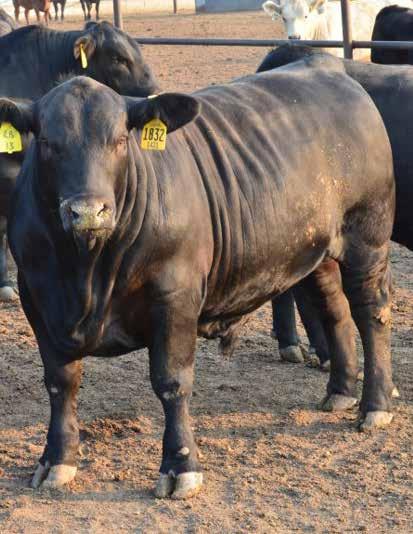
storms are thrown out (the bunks are outside, so snow or rain accumulation can corrupt the data). Animals with unusual consumption data perhaps due to subclinical illness are also deleted from the analysis.
Feed Efficiency Results
There are different ways to express feed efficiency. Common methods of measurement are to compute Residual Feed Intake (RFI) or Residual Average Daily Gain (RADG). RADG is more intuitive. It measures differences in daily gain (positive or negative) given a certain level of feed consumption. Two animals may have identical feed intake
but display quite different rates of gain. Obviously, those animals that gain more given the same feed consumption have a cost-of-production advantage.
The chart below shows the distribution of the steers with ADG plotted against average daily feed consumption. Each dot represents one steer. The line through the middle of the data points is the regression line, which is essentially the average relationship between gain and consumption specific to this group of test animals. Those animals above the line gained more than expected based on their feed consumption and those below the line gained less than expected.
Average Daily Gain
The two steers highlighted with the yellow arrows consumed nearly identical amounts of feed, but one of them gained 3.5 lbs/day while the other gained over 5.5 lbs/day during the GrowSafe testing period. There are obviously significant differences. Some of the difference is genetic and some is environmental. The most informative information is not the individual variances, but the differences between sire groups after all the data are properly analyzed by valid statistical methods.
It is not fair to assume that those below the line are “bad” for feed efficiency. They may be very good, but they still have pen mates that are better. Every group of cattle tested on GrowSafe will average zero for either RFI or RADG. Think of it as a

FALL 2023 FRONTLINE BEEF PRODUCER 40
2 2.5 3 3.5 4 4.5 5 5.5 6 6.5 7 12 14 16 18 20 22 24 26 28 30 32 34 AVG Daily Gain AVG Dry Matter Intake Residual
snapshot of a single group. Every group, whether very good or very bad, will have animals above the line and animals below the line and the average will be zero. The difference between the sire groups is what’s important for genetic evaluation and producing a reliable EPD for RADG
Feed efficiency on a group basis is a very robust driver of feedyard profitability. Aside from the initial cost of the cattle, the vast majority of the cost of producing a finished steer is due to feed. Feedyards measure feed efficiency by computing Dry Matter Conversion. Since rations vary for moisture content, computing feed conversion on a dry matter basis is the only way to fairly compute animal performance.
The steers in this project posted average Dry Matter
Conversion of 6.37 and 6.18 for the Oklahoma steers and Texas steers, respectively – for a weighed average of 6.3.
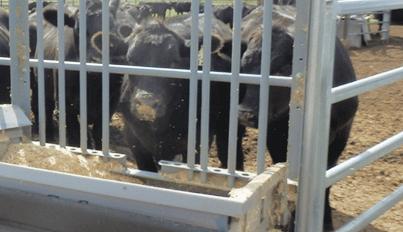
To provide a frame of reference, our feedlot performance data was compared to 14,200 other steers in southwest Kansas that were placed on feed around the same time and at approximately the same weight as the Brangus steers. This provides a basis for comparison. The Brangus steers did extremely well – saving nearly .4-lbs of feed per pound of gain.
When multiplied by 700-lbs of feedlot gain, the savings amounts to 280-lbs of feed on a dry matter basis. At $300/ton of dry matter, the savings amount to $42 per head.
The Brangus steers also out-gained the SW Kansas benchmark steers by a considerable margin as illustrated in Table 1 below. The RADG values for each sire can only be compared to other sires tested in the same cooperator herd. When these data are subjected to a complete statistical analysis, the RADG values can be compared across all sires. But the simple averages below can only be compared within each cooperator group.
continued on page 42

41 FALL 2023 FRONTLINE BEEF PRODUCER
Morgan Henry Sadovsky Family
Brady Hanson, BH Cattle Company
Gary Leseman, Leseman Double Diamond Ranch
Barrett Klein & John Bellinger, B/K Beef
Seth & Dane McGinnis, Wild M Brangus
THANK for ‘steak’ing your future
These breeders have donated towards Round 2 of the Brangus Value Project, join us in thanking them for their support!!
Danny Farris, Farris Ranching
Sarita Mutscher, Mutscher Brangus
International Red Brangus Association
David & Jodi Jackson, Jackson Family Brangus
John N Holley, Saddle Hill Cattle Co
Gary & Kathy Buchholz, GKB Cattle

Allen Goode, Trio Cattle
Gary Wente, GW Cattle Company
Jeremy Jackson, Jackson’s Double J Brangus
Peter W De Leeuw, Pennridge Ranch
Kevin & Laurie Pawelek, K&L Brangus
Randy Malouf, Grassy Lake Cattle Co.
Gary Sewell, Sewell Cattle Company
Bill & Gail Davis, Chimney Rock Cattle Co
Santa Rosa Ranch
Michael & Lisa Neal, MidSouth Cattle Reprologix
Eddie & Cindy Blazek, Mound Creek Brangus
Tracy & Cindy Holbert, Blackwater Ranch
Matt & Whitney Dorsett, Rafter 3 Cattle Co
David Wood, Double W Ranch
Brandon & Kari Belt, Belt Brangus
Malachi & Drea Sandoval, All In Cattle Company
Traci Middleton, Mill Creek Land & Cattle
Trey Cuevas, T3 Brangus
Milton & Johana Villarreal, Villa Ranch
Phillips Ranch
Craig & Anita Green
Joe & Nancy Cavender, Cavender Brangus
Jimmy Trice, TTT Brangus Farm
John Milam, Draggin’ M Ranch
Tommie Rogers, The Branch Ranch
Bill Austin
Bart Carter, Carter Brangus
Bo Herndon, Herndon Farms
Kyle & Jennifer Caldwell
YOU Brangus
Michael Manners, Stalwart Ranches

Milton Sundbeck, TCF Brangus
David Gochnour, Diamond G Brangus
ACE
Don & Lili Cox, Cox Excalibur
The Cowan Family, Bar X
Quail Valley
Warren Young
Mark & Tammy Perry, MP Brangus
Josh Walker, Red Bud Farms
Ross Wilson, Wilson & Wilson Brangus
Randy & Karen Schmidt, Schmidt Farms
Anthony Giffin, Giffin Brangus
Nic Cornelison, Lake Majestik
Doyle Miller, Miller Brangus
Oskar Juarez, Gold Creek Brangus
Rob Singleton, Singleton Cattle Co
Marty & Belinda Lavender, Lavender Brangus
Chuck & Norma Sword, Char-No Farm
Lane Grant, Grant Cattle Co.
Carl & Becky Goodnight
Ken & Judy Caldwell, KCK Ranch
Jay & Tara Franks, Beech Creek Farms
Prodcuers Cooperative Association
Tom & Mary Moore, M-Bar-M Ranch
John Foster, Last Lap Ranch
GENEPLUS
Cody & Emily Gariss
Casy George, 3G Cattle
Debbi Holmes-Stockstill, Eagles Nest Ranch
William Martin, Martin Valley Farms
Adam Hicks, Hicks Ranch
on
continued from page 39
Carcass Results
The IBBA sired steers from both groups averaged 84% USDA Choice or higher, including 3% USDA Prime, beating the industry average at the time of 80% Choice or higher. USDA quality grades are assigned to carcasses based on marbling score, with the higher the score, the higher the grade. A marbling score in the 300’s would correspond to USDA Select, 400’s would correspond to Low Choice, 500’s and 600’s would correspond to Premium Choice and 700’s to Low Prime. If the other specifications for ribeye size and carcass weight are met, many carcasses with marbling scores in the 500 to 600 range qualify for top choice boxed beef programs like Certified Angus Beef. Three of the seven IBBA sires produced progeny with average marbling scores equivalent to premium Choice, with 3 others in the top 75% of Low Choice, not far away from premium Choice.
and each has different management. A complete statistical analysis will allow head-to-head comparisons after adjusting for “herd effect”. Until that statistical analysis is properly completed, the sires will remain coded and not specifically named.

Tenderness Results
There are 3 legs on the stool of meat palatability: tenderness, juiciness, and flavor. Tenderness by far carries the biggest stick in that relationship and in blind taste panels consumers consistently rate tenderness as the most important driver for eating quality and willingness to pay. Although tenderness has not been incorporated into a grid pricing scheme, it is still a commercially relevant trait to measure and select for. To measure tenderness, a team of graduate students from Texas Tech University collected strip loin steak samples from each of the carcasses involved in the project and aged them for 21 days to mimic an eating experience in
The average yield grade was 3.6. While this is very acceptable, we did end up with more yield grade 4’s than we would have liked. Since these were research cattle, they had to remain together through the entirety of the project in order to keep them in a perfect contemporary group and maintain the integrity of future EPD’s crafted from this data. Under normal conditions, the calves with more condition could have and would have been sorted off and harvested at an earlier endpoint. It should also be noted that the carcass weights found in the data table are unadjusted carcass weights, meaning that before they are incorporated into the IBBA genetic evaluation they will be adjusted to a standardized 28.7% empty body fat. The Oklahoma and Texas steers managed to rake in $32.22/head and $21.75/head premiums respectively over the live price when sold on a grid. It is not appropriate to compare carcass data from one cooperator group to another based on the simple averages presented in the table. The two cooperator herds are not genetically identical,
a restaurant. The strip loin steaks were cooked to a consistent internal temperature of 135 degrees and placed into a plastic cutting guide (pictured right). A graduate student used a special doublebladed knife to remove a slice from the steak where the muscle fibers were all running in the same direction. The steak slice was then placed onto a slice shear force machine (pictured left) where a dull metal blade cuts the steak slice in half perpendicular to the muscle fibers. As the machine cuts through the piece of steak, a sensor measures how many pounds of force it took to cut the steak slice in half, mimicking how much force it would take a person to chew it. Researchers have correlated slice shear
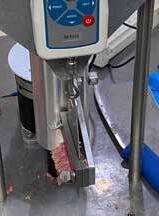

FALL 2023 FRONTLINE BEEF PRODUCER 44
force results to taste panel results and came up with general descriptive categories to describe tenderness such as “very tender”, “tender”, “intermediate” and “tough”. Round 1 sheared in the range of “Very Tender” and “Tender”. Round 2 steers, like the steers from Round 1, were over 95% very tender or tender.
Next Steps

From its inception, the Brangus Value Project was intended to be a perpetual benchmarking project. Round 3 calves are being DNA verified currently and should be ready to enter the feedlot the fall/winter. Cows participating in Round 4 of the project are already bred and a new cooperator in Arkansas was recently brought on to test 2 more black bulls to fill out the data from Round 2, as well as the first Red Brangus bull. Round 5 sire selection will be underway soon. The data collected from Rounds 1 and 2 will be included into IBBA’s genetic evaluation database and used to create commercially relevant EPDs for Marbling Score, Carcass Weight, Tenderness and feed efficiency. Round 1 sires had over 1,124 active daughters and 997 active sons at last year’s evaluation, that number is even larger this year. Between all Round 2 sires, there are 3,819 active sons and daughters. Most of the sons are in commercial herds as we speak, and the daughters will soon be producing or have already produced calves of their own in IBBA member herds. The big picture here is that by testing 5-8 sires each year, we can produce unique EPDs for thousands of animals in the Brangus population.
A Big Brangus “Thank You”
Thank you to all the progressive breeders that donated semen to this project. The improvements that have been made in the Brangus breed over the last 40 years do not happen overnight; and managing to make those drastic improvements in carcass quality while not giving up and inch of ground on maternal soundness is a true feat of strength.
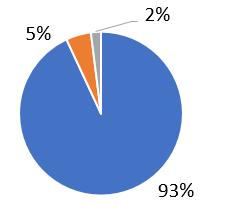
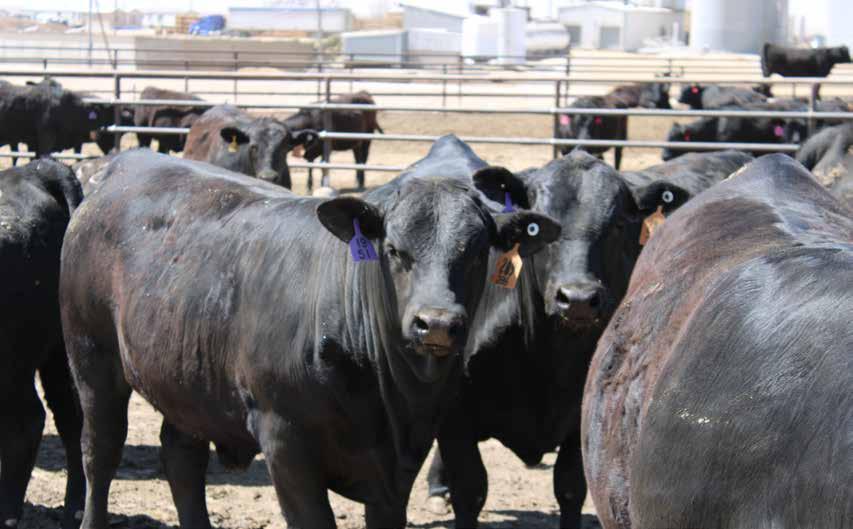
Rounds 1 and 2 were funded by cattlemen who “sponsored” a steer by donating $500 to the International Brangus Breeders Foundation (IBBF). This donation was used to pay for the cost of putting the steers on GrowSafe and to make sure we can continue this project into the future; without that support, none of this would be possible. To say, “Thank you”, each sponsor will receive an Upper 2/3rds Choice strip loin pre-cut into steaks for them to enjoy. Some breeders sponsored 1 and some sponsored 10. All sponsors are appreciated. You can sponsor as many calves as you like and will be shipped a commensurate number of strip loins. We expect to have 130+ hd in Round 3 and will be seeking sponsorships soon. Some breeders have told the IBBA staff to “automatically” sign them up for a sponsorship for all future rounds of the Brangus Value Project. That kind of support is priceless and sincerely appreciated.
IBBF is a 501(c)3 charitable foundation. If you would like to sponsor a steer for Round 3, please contact Kyle Caldwell at kcaldwell@gobrangus.com or Mandie Sadovsky at the IBBA office (msadovsky@gobrangus.com) or call the office and ask for Mandie.
Very Tender









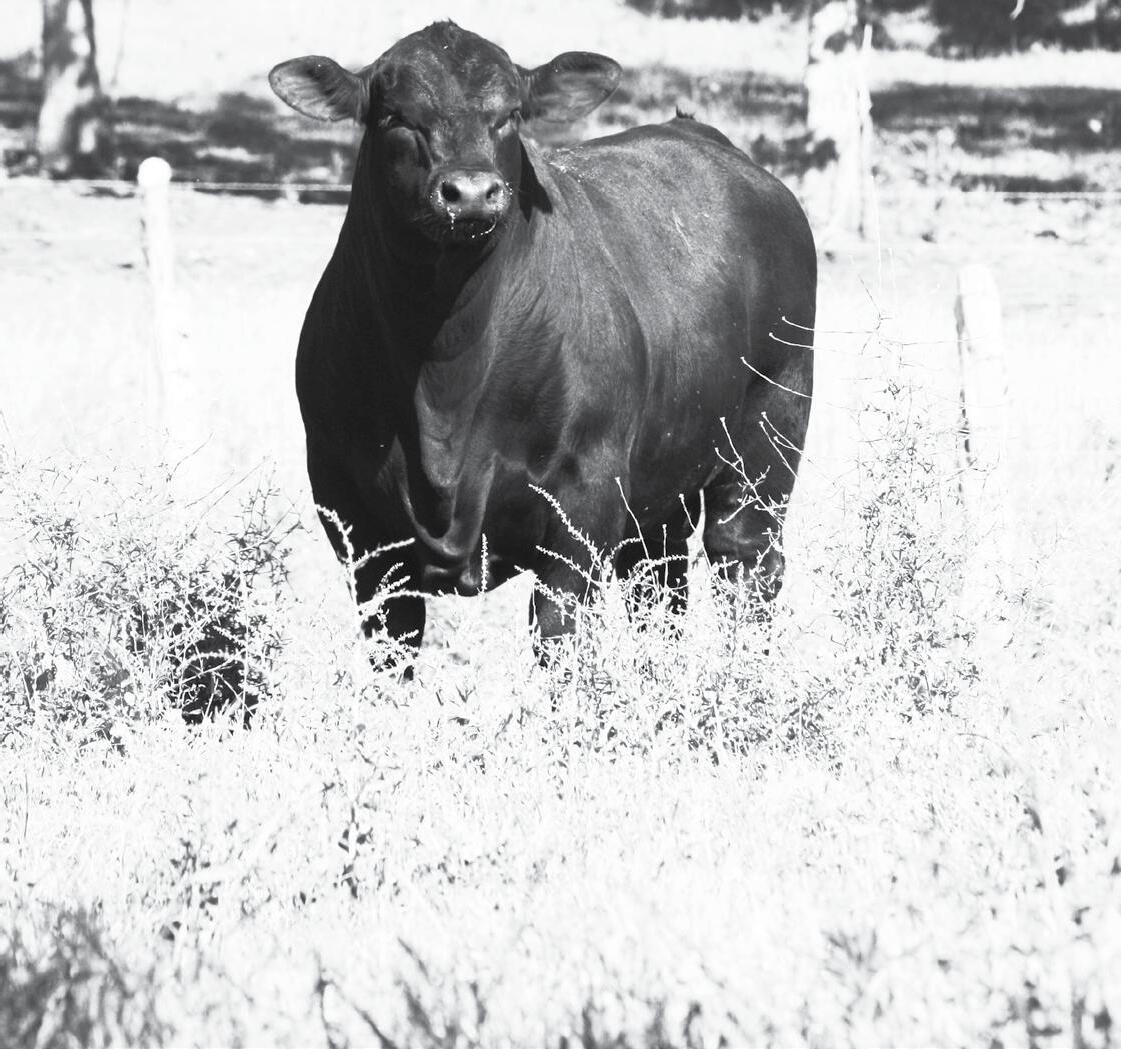
CRC MASTERPIECE 40K LM SIGNAL 75K73 AG WRANGLER 302K2 CRC BLUEPRINT 919K7 CRC ORACLE 919K8 LM PRIORITY ONE 5051K
GACC WRANGLER 102K1 CRC SIGNAL 2K45
BCC BEACON 416K1
THE ISSUES
Consistency
Quality Foot Shape & Structure
Great Marbling Ability

Increased Dressing Percentage
Improved Feed Efficiency/Conversion














Increased Heterosis






Heavier Weaning Weights
Maternal Excellence
Multi Region Adaptability
MY NEIGHBOR’S BLACK BULL
MY GENEPLUS BULL
Bet it All on Brangus
by Kyle Caldwell, International Brangus Breeders Association (IBBA) Director of Field Services & Strategic Projects
I was at the Superior Livestock Video Royale sale in Winnemucca, NV a few weeks ago and witnessed what I have heard many talk about: a set of 112 weaned steer calves weighing 415-pounds selling for $400/cwt. While that price is steep, what I haven’t heard so much about is the 12 valueadded programs that producer took advantage of to justify that $4 selling price. Not all of us can command a premium like that, but with cattle prices like we have been seeing lately, it is hard not to make money in the cattle business. It is crucial to implement positive changes in your operation now and maximize return while the getting is good so that when the cattle market begins to equilibrate you can still command top dollar for your calves at market.
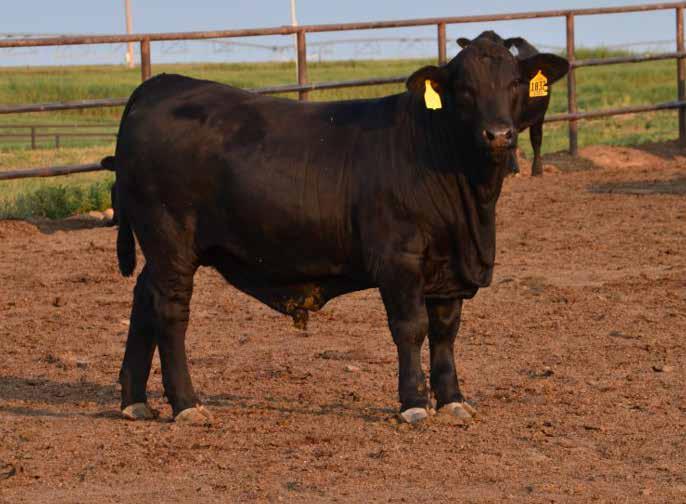
CattleFax regularly separates their analysis based on what they call “Low Return” and “High Return” producers. The degree of separation between these two is often quite large, with the high return producers earning upwards of 50% more than low return producers. What is the difference between these two types of producers? A commitment to not cut corners on major aspects of the business, namely: health and nutrition programs and investing in high quality
genetics. In talking with cattlemen in the field, this often takes the form of pounds of calf weaned per cow exposed, percent body weight weaned, or pounds weaned per acre. Speaking of weaning, backgrounding and stocker operations generally prefer calves that have been preconditioned prior to arriving at their facilities as it decreases the adaptation time and decreases the chance of a health-related event to occur. According to last month’s CattleFax report, calves weaned for 45 days prior to shipping received around $115 more per head than those shipped right off the cow. Additionally, calves that were given just a single shot of 9-way modifiedlive clostridial vaccine brought in about $78 more per head and more pounds of weaning weight, while two rounds of vaccinations brought $136 more per head. When marketing calves, try and market in lot loads. Doing this would net a producer close to an extra $7 to $10/cwt. For smaller operators, consider working with your seedstock supplier for assistance in marketing calves; they could have several customers in the same boat with calves around the same age/ weight as yours that could be used to fill a semi-trailer. You can also take advantage of the Brangus Vigor tag program to
FALL 2023 FRONTLINE BEEF PRODUCER 48

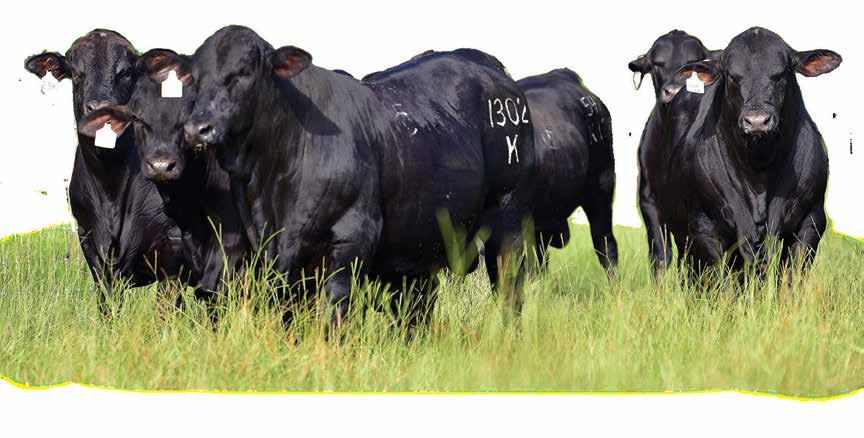
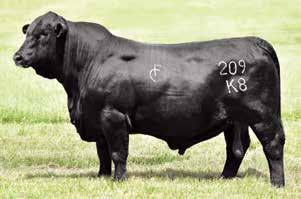
FENCO FARMS We Sell Cattle to Fit Your Needs JIM & LYNDA FENTON 305-934-1705 CLAY COOPER, MANAGER | 352-302-2734 P.O. BOX 658 FLORAL CITY, FL 34436 FENCO FARMS Mark Your Calendars PHILLIPS RANCH, FENCO FARMS AND SADDLE HILL CATTLE CO. WILL BE OFFERING 140 STOUT HERD SIRES AND RANGE BULLS TUESDAY, OCTOBER 24, 2023 FOR THE PHILLIPS-FENCO BULL SALE! CED 3.1 BW 1.3 WW 46 YW 83 M 8 TM 32 SC 1.11 REA 0.85 IMF 0.33 FERT 2.31 TERM 4.68 CEM 2.30 FAT 0.024 H PREG 11.92 STAY 1.72 COW WT -0.22 TRAIT EPD FC BIG TOWN 209K8 || REG. # R10525541
raise the stakes on your calves and separate them from the pack of generic black-with-a-touch-of-ear calves.
While on a recent tour of Cactus Feeders in Tulia, Texas, the IBBA Breed Improvement and Commercial Marketing Committees had the chance to learn about feedlot operations and how to market cattle beyond the front gate. We heard about opportunities to partner with feed yards on multiple levels from financing feed or partnering 50/50, 70/30 or even 90/10; allowing the producer to not only share in a portion of the risk, but also share in the reward. The feeder would make margin calls on your behalf if you elect to hedge your cattle and will market your cattle to the packer. As
exciting as all of that sounded, what we heard over and over from multiple people along the way was something to the tune of “If you believe you are doing the right things and have the right genetics, put your money where your mouth is”. For those that believe in the genetic merit of their stock, take a page from several successful Brangus breeders and consider retaining ownership through the feedlot. Some enterprising Brangus outfits have been feeding cattle for several years and instead of me telling you how beneficial it has been, I thought the best way to have some perspective was to get it straight from the source. Between Cavender Ranches, Fenco Farms, Sewell Cattle Company and Johnston Cattle Company, I interviewed a combined 120 years of experience in the cattle feeding business. If I were to type out everything I learned from these owners and managers I would fill this entire magazine, so instead I’ll give you the Cliff’s Notes version:
1) Receiving feed conversion and carcass data back from the Feedyard and packer has been instrumental in making informed selection decisions to take their program to the next level.

2) 25 years ago, when U.S. feeder cattle were averaging around 50% USDA Choice or better, these member’s Brangus were around 40% Choice or better. Today, the average fat steer or heifer grades around 85% Choice or better with the average Brangus steer among these members grading around 90% Choice or better. This information is further corroborated by data from the Brangus Value Project.
3) Depending on the year, producers retaining ownership can pick up an extra 10 to 12% return versus selling calves at weaning.
Some enterprising breeders have also started their own meat company, like Jeremy Jackson of Jackson’s Double J Brangus of Gentry, Arkansas, Zane Kantor of Kantor Cattle in Mexia, Texas and Johnny Kopycynski of Oak Creek Farms in Chappell Hill, Texas. Visible producers such as these are ambassadors for the Brangus breed and putting their product out there for the general public to consume takes a lot
FALL 2023 FRONTLINE BEEF PRODUCER 50


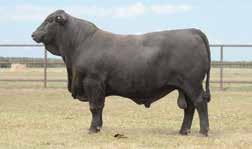

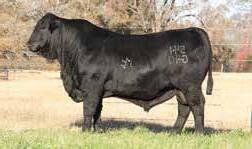

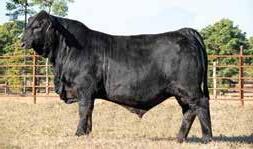

MARK COWAN 903-495-4522 • TODD HARVEY 386-288-8059 JUSTIN MATEJKA 903-521-1070 • JOE CAVENDER 903-571-1209 INFO@CAVENDERRANCHES.COM VISIT CAVENDERRANCHES.COM FOR MORE GREAT SEMEN OPTIONS! Semen Sires for Every Program ACE OF SPADES 406J OWNERS: CAVENDER RANCHES, FENCO FARMS AND AMERICAN CATTLE ENTERPRISE /UNIT $75 CED BW WW YW M TM CEM SC REA IMF FT 9.5 -1.0 36 75 6 24 3.59 0.9 0.88 0.52 0.027 CB NEW STANDARD 817J3 OWNERS: CAVENDER BRANGUS, TTT, AND DH BRANGUS /UNIT $50 CED BW WW YW M TM CEM SC REA IMF FT 0.2 1.5 43 82 7 29 2.65 0.95 0.56 0.16 0.060 MC BIG CITY 541G40 OWNERS: MOUND CREEK RANCH, CAVENDER BRANGUS, AND DRAGGIN’ M RANCH /UNIT $50 CED BW WW YW M TM CEM SC REA IMF FT 4.2 -0.2 32 47 10 27 -0.39 1.02 0.49 0.27 0.009 DMR EXPRESS 415J134 OWNERS: DRAGGIN’ M RANCH, CAVENDER BRANGUS AND DAVID BONDFIELD /UNIT $50 CED BW WW YW M TM CEM SC REA IMF FT 7.2 -0.9 35 58 7 25 1.43 1.61 0.34 0.24 0.028 CB DEADWOOD 60H41 OWNERS: CAVENDER BRANGUS AND DRAGGIN’ M RANCH /UNIT $50 CED BW WW YW M TM CEM SC REA IMF FT 3.8 0.5 48 87 2 26 3.24 1.55 0.64 0.42 0.013 CB BLOUNT 607G7 OWNERS: CAVENDER BRANGUS AND HAYMAN’S 711 RANCH /UNIT $50 CED BW WW YW M TM CEM SC REA IMF FT -0.6 2.6 54 80 5 32 2.71 0.59 0.41 0.12 0.011
of faith and courage in one’s brand. Trusting in their own ability and in quality Brangus genetics helps them to put out an end product anyone would be proud of.
In speaking with these cattlemen, I also asked for a piece of advice for rookies in the cattle feeding business.
1) Have a solid risk management strategy.
2) If you are buying good bulls and the market aligns, then you are leaving money on the table by not retaining ownership.
3) Allow four to five years to have good enough data to make well-informed decisions.
4) The reason they’ve been successful is investing in the right high quality Brangus genetics.
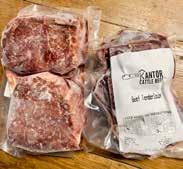


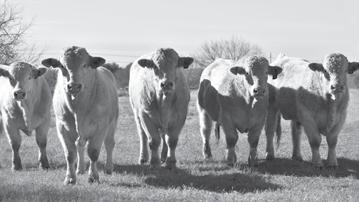
All these Brangus breeders go the extra mile to create the best product they can by making use of EPD’s and
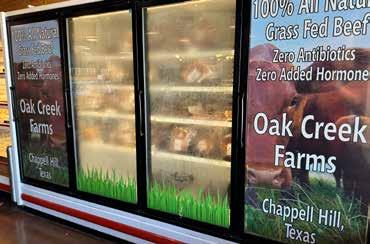
live performance data to make the most informed decisions possible. They have all taken a page from Cactus Feeder’s book and put their money where their mouths are. The longer I have been in this role, I see time and time again Brangus cattle coming up with the winning hand. Through stringent selection and a commitment to excellence, Brangus breeders have upped the ante to not only meet but exceed industry standards in the feedlot and on the rail. The late Kenny Rogers once sang “You got to know when to hold ‘em, know when to fold ‘em”. I may not be any good at poker, but based on these testimonies and the data from the Brangus Value Project, I say Brangus is a safe bet.
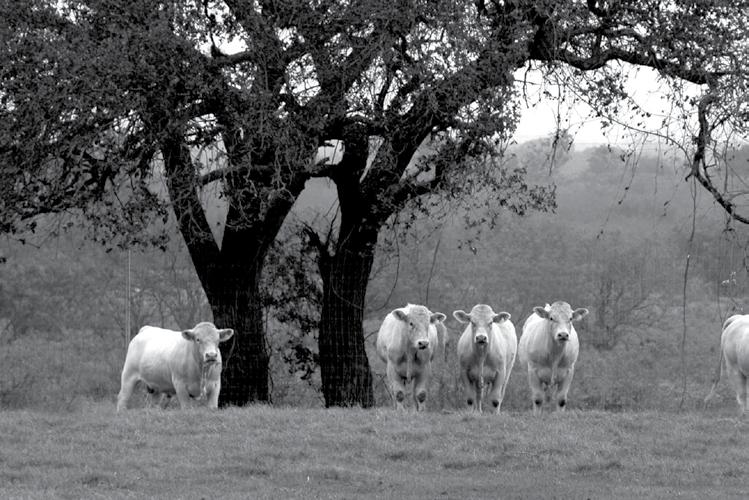
FALL 2023 FRONTLINE BEEF PRODUCER 52
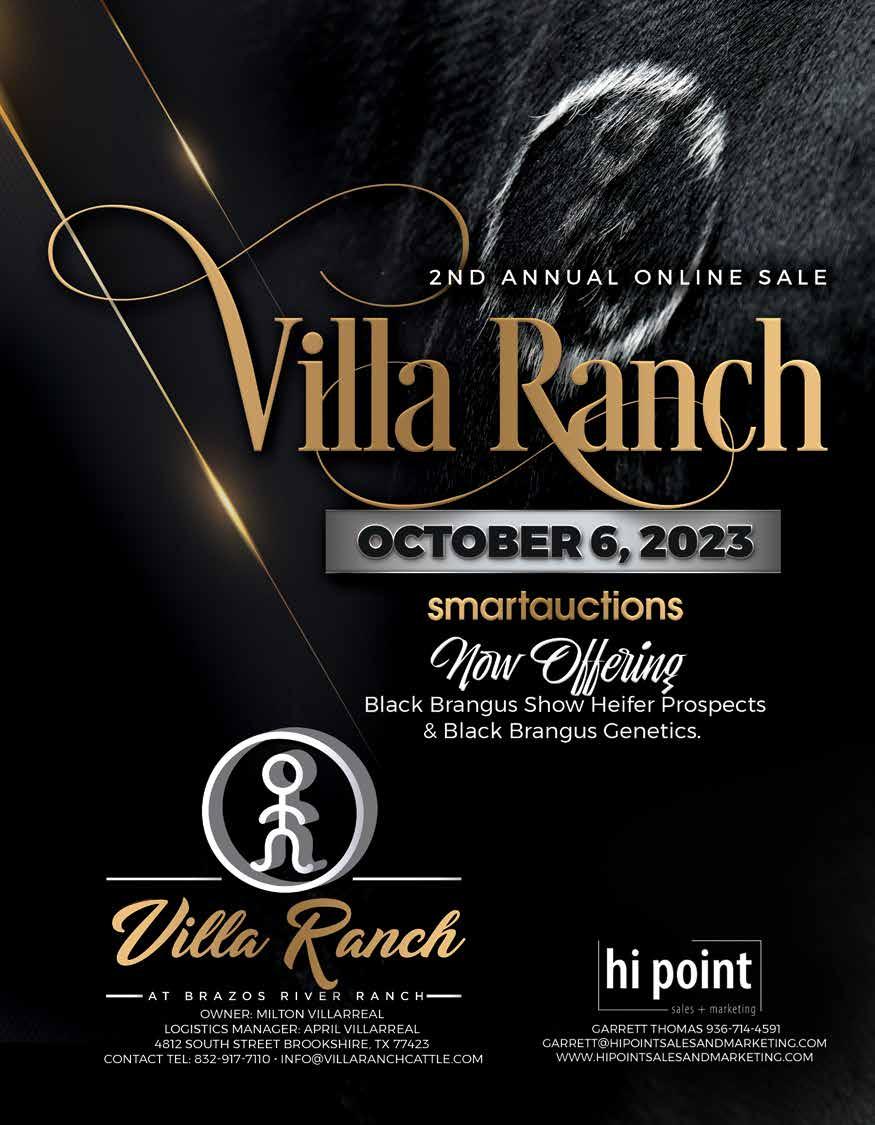
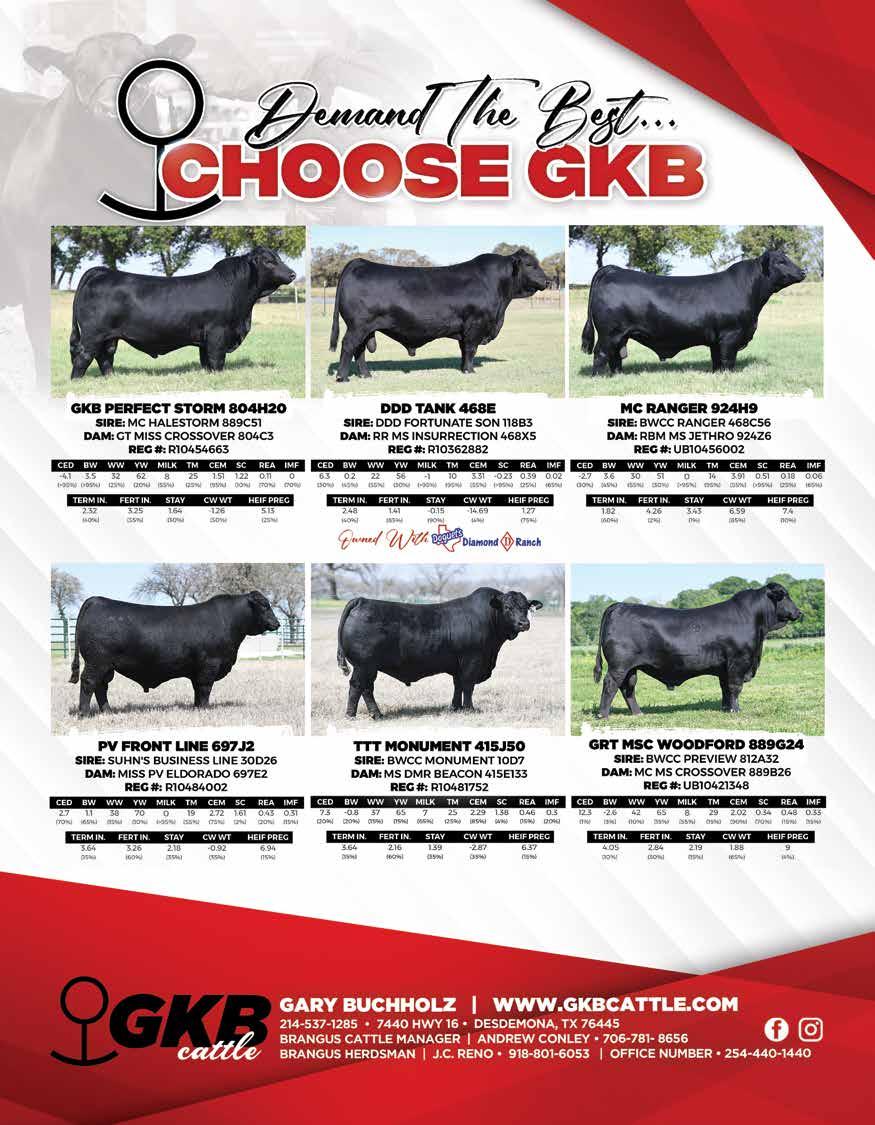
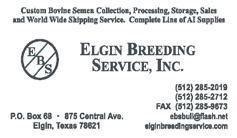
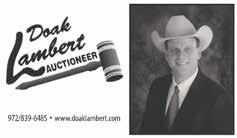
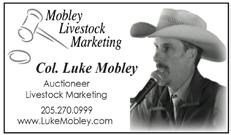

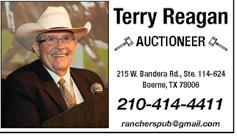




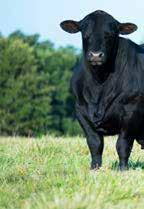











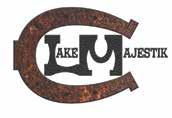
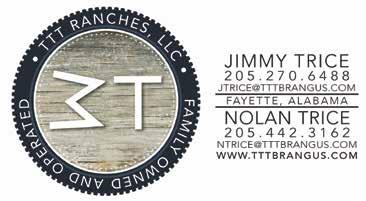

55 FALL 2023 FRONTLINE BEEF PRODUCER | SERVICE DIRECTORY | SERVICE DIRECTORY International Brangus® Breeders Association 8870 US Highway 87 E, San Antonio, TX 78263 P.O. Box 809, Adkins, TX 78101 info@gobrangus.com O: 210.696.8231 | F: 210.696.8718 Contact the IBBA today! May 2022 50 FIND A BREEDER NEAR YOU VISIT US AT GOBRANGUS.COM / BREEDER-SEARCH For advertising opportunities in the Brangus Journal or Frontline Beef Producer, contact Melanie Fuller at 979-255-3343 or mfuller@gobrangus.com. SERVICE DIRECTORY ALABAMA — ARIZONA — ARKANSAS ALABAMA - ARKANSAS 51 Contact Melanie Fuller at mfuller@gobrangus.com or 979.255.3343 for advertising spaces ARKANSAS — CALIFORNIA — FLORIDA — GEORGIA — KANSAS — LOUISIANA JOHN MILAM, OWNER Grady Green, Ranch Manager 870-314-3673 | grady@dragginmranch.com El Dorado, Arkansas www.dragginm.com 2020 IBBA Top ET Breeder Brangus & Ultrablacks BULLS & FEMALES SPANISH RANCH Brangus and Ultrablack Cattle Pamela Doiron 805-245-0434 doiron@spanishranch.net Follow Us on Facebook or Instagram @spanishranchcuyama available private treaty and select sales FIND A BREEDER NEAR YOU VISIT US AT GOBRANGUS.COM / BREEDER-SEARCH STATE DIRECTORY L.G. Herdon, Jr Owner 912.293.1316 Sky Herdon, Co-Owner 912.245.0428 7/15/21 1:57 PM For advertising opportunities in the Brangus Journal or Frontline Beef Producer, contact Kyle Caldwell at 214-794-3625 or kcaldwell@gobrangus.com












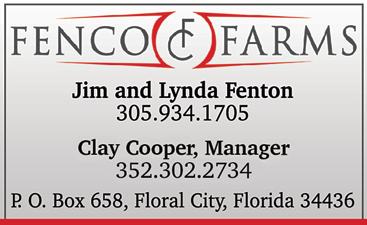
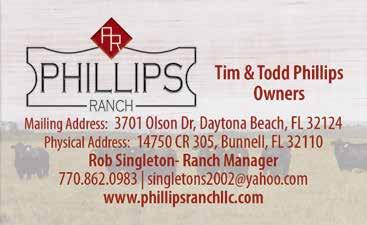
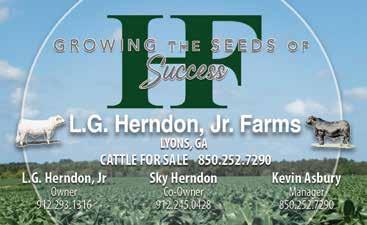
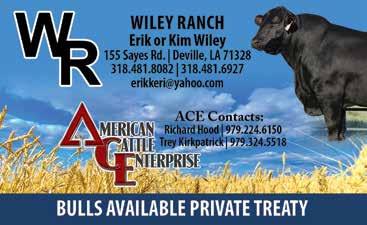
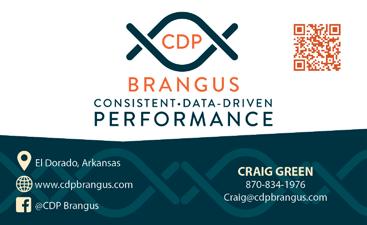
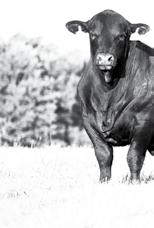



FALL 2023 FRONTLINE BEEF PRODUCER 56 | STATE DIRECTORY | ALABAMA - ARKANSAS - CALIFORNIA - FLORIDA - GEORGIA - LOUISIANA 51 Contact Melanie Fuller at mfuller@gobrangus.com or 979.255.3343 for advertising spaces ARKANSAS — CALIFORNIA — FLORIDA — GEORGIA — KANSAS — LOUISIANA JOHN MILAM, OWNER Grady Green, Ranch Manager 870-314-3673 | grady@dragginmranch.com El Dorado, Arkansas www.dragginm.com 2020 IBBA Top ET Breeder FIND A BREEDER NEAR YOU VISIT US AT GOBRANGUS.COM / BREEDER-SEARCH STATE DIRECTORY L.G. Herdon, Jr Owner 912.293.1316 7/15/21 1:57 PM SPANISH RANCH Brangus and Ultrablack Cattle Pamela & AJ Doiron l 805-245-0434 Cell doiron@spanishranch.net l www.spanishranch.net Brangus & Ultrablacks Brangus and Ultrablack Bulls and Females Available Now at the Ranch Private Treaty THD © VISIT US ONLINE www.spanishranch.net Follow Us on Instagram @spanishranchcuyama





















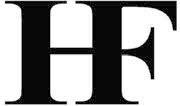
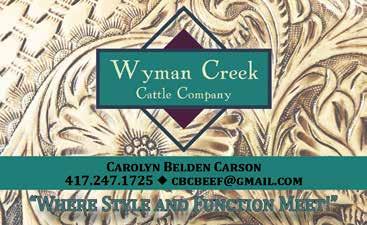

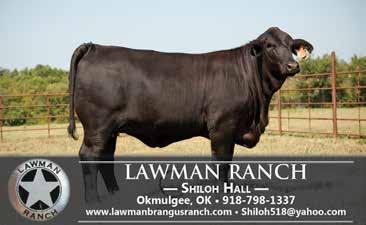

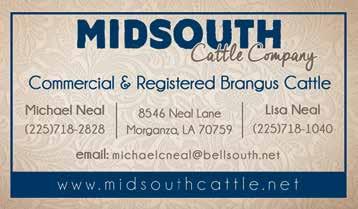


57 FALL 2023 FRONTLINE BEEF PRODUCER | STATE DIRECTORY | LOUISIANA - MISSISSIPPI - MISSOURI - NEW MEXICO - OKLAHOMA - TEXAS 51 Contact Melanie Fuller at mfuller@gobrangus.com or 979.255.3343 for advertising spaces ARKANSAS — CALIFORNIA — FLORIDA — GEORGIA — KANSAS — LOUISIANA JOHN MILAM, OWNER Grady Green, Ranch Manager 870-314-3673 | grady@dragginmranch.com El Dorado, Arkansas www.dragginm.com 2020 IBBA Top ET Breeder Brangus & Ultrablacks BULLS & FEMALES SPANISH RANCH Brangus and Ultrablack Cattle doiron@spanishranch.net Follow Us on Facebook or Instagram @spanishranchcuyama available private treaty and select sales FIND A BREEDER NEAR YOU VISIT US AT GOBRANGUS.COM / BREEDER-SEARCH STATE DIRECTORY L.G. Herdon, Jr Owner 912.293.1316 Sky Herdon, Co-Owner 912.245.0428 Kevin Asbury, Manager 850.252.7290 Herndon Businesss Card ad.indd 1 7/15/21 1:57 PM Breeding the Best Better. © Top Quality Bulls Available by Private Treaty Call today to pick your next herd sire. 575 365 6356 ™ at We stall Ran ch — Joe Cavender, Owner Justin Matejka, General Manager | 903-521-1070 Mark Cowan, Marketing & Customer Service | 903-810-2413 1200 CR 4716 • Troup, TX 75789 | CavenderRanches.com Certified Free Herd # D80550202 Sales: 2nd Saturday in March 3rd Tuesday in March 4th Saturday in April 4th Weekend in October 3rd Weekend in November
David Wood Magnolia, MS 713-539-5715 dwood@woodcorporation.com CDPBrangus.com











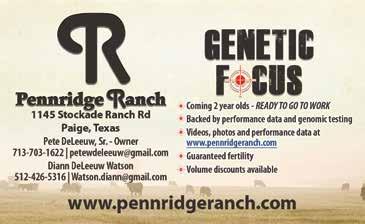


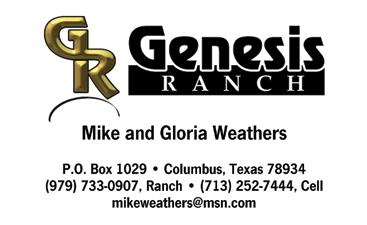

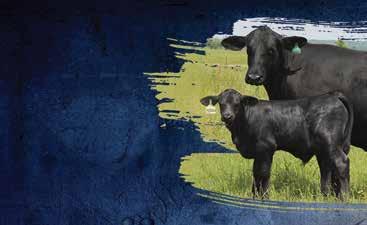
FALL 2023 FRONTLINE BEEF PRODUCER 58 | STATE DIRECTORY | TEXAS 51 Contact Melanie Fuller at mfuller@gobrangus.com or 979.255.3343 for advertising spaces ARKANSAS — CALIFORNIA — FLORIDA — GEORGIA — KANSAS — LOUISIANA JOHN MILAM, OWNER Grady Green, Ranch Manager 870-314-3673 | grady@dragginmranch.com El Dorado, Arkansas www.dragginm.com 2020 IBBA Top ET Breeder FIND A BREEDER NEAR YOU VISIT US AT GOBRANGUS.COM / BREEDER-SEARCH STATE DIRECTORY L.G. Herdon, Jr Owner 912.293.1316 Sky Herdon, Co-Owner 912.245.0428 7/15/21 1:57 PM GREAT BRANGUS BULLS - PRIVATE TREATY Joe and Melanie Fuller - Ben and Trish Fuller 14148 N State Highway 16, Willow City, TX 78675 C. 979-255-7747 E. jw.fuller@yahoo.com JODI & DAVID JACKSON 3099 Horseshoe Bend Waco, Texas 76708 Jodi cell: 254.722.9138 jodiatbentwood@sbcglobal.net BULLS FOR SALE
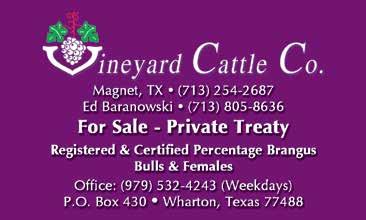












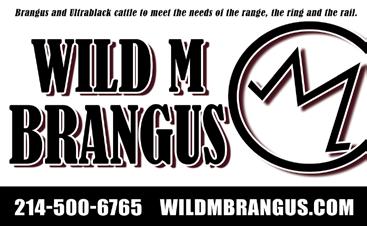

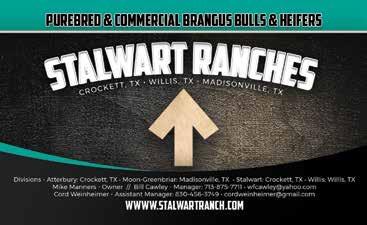

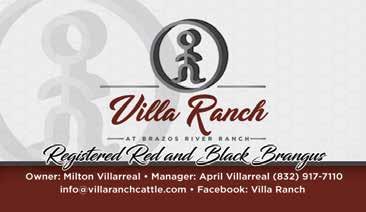
59 FALL 2023 FRONTLINE BEEF PRODUCER | STATE DIRECTORY | TEXAS 51 Contact Melanie Fuller at mfuller@gobrangus.com or 979.255.3343 for advertising spaces ARKANSAS — CALIFORNIA — FLORIDA — GEORGIA — KANSAS — LOUISIANA JOHN MILAM, OWNER Grady Green, Ranch Manager 870-314-3673 | grady@dragginmranch.com El Dorado, Arkansas www.dragginm.com 2020 IBBA Top ET Breeder FIND A BREEDER NEAR YOU VISIT US AT GOBRANGUS.COM / BREEDER-SEARCH STATE DIRECTORY L.G. Herdon, Jr Owner 912.293.1316 Sky Herdon, Co-Owner 912.245.0428 Kevin Asbury, Manager 850.252.7290 Herndon Businesss Card ad.indd 1 7/15/21 1:57 PM BRANGUS & ULTRABLACK Schmidt Farms For advertising opportunities in the Brangus Journal or Frontline Beef Producer, contact Kyle Caldwell at 214-794-3625 or kcaldwell@gobrangus.com

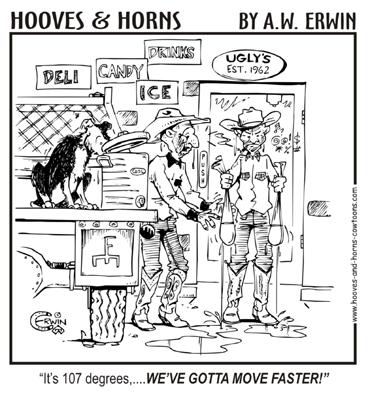
FALL 2023 FRONTLINE BEEF PRODUCER 60 | CALENDAR OF EVENTS | CALENDAR 3-4 NOVEMBER GENEPLUS AT CHIMNEY ROCK CATTLE COMPANY FALL 2023 SALE SEPTEMBER 18TH ROMA BRANGUS SALE 1 NEW MEXICO STATE FAIR OPEN BRANGUS SHOW – POINT SHOW 15 MBJ AND TRIO POWER OF THE BRANDS SALE 9 OCTOBER 47TH ANNUAL ROCKHAMPTON BRANGUS SALE 9-10 THE BRANCH RANCH ROUGH AND READY BULL SALE 6 16 Want Your Event Listed? Submit Them Today! Visit GoBrangus.com/events-and-shows/ ACE SOUTHERN HARVEST SALE AT WILEY RANCH 9 MP BRANGUS “WHERE PERFORMANCE MEETS STYLE” 21 9 DECEMBER TEXAS DROVERS BULL & COMMERCIAL FEMALE SALE ACE FEMALE & BULL SALE AT QUAIL VALLEY FARMS 10-11 NATIONAL SHOW OF MERIT – NATIONAL SOE POINT SHOW 25-28 BRIGGS RANCHES 20TH ANNUAL SALE 26-28 LG HERNDON JR FARMS BULL & FEMALE SALE 28 TOWN CREEK FARM BULL SALE AND COMMERCIAL HEIFER SALE 21 SOUTHEAST BRANGUS BREEDERS ASSOCIATION JUNIOR SHOW 29 SOUTHEAST BRANGUS BREEDERS ASSOCIATION SHOWCASE SALE 30 MIDSOUTH CATTLE COMPANY & NEAL RANCH ANNUAL SALE PHILLIPS-FENCO BULL SALE 24 SCAMARDO BRANGUS ANNUAL PRODUCTION SALE 7 OAK CREEK FARMS FORAGE DEVELOPED BULL & HEIFER SALE 28 ADDISON BRANGUS FARMS SALE 14 NOVEMBER THE BEST OF BRANGUS FROZEN GENETICS SALE 20 CAVENDER BRANGUS 19TH ANNUAL FALL PRODUCTION SALE 17-18 CDP BRANGUS FALL PRODUCTION SALE 15-16 VILLA RANCH INAUGURAL ONLINE SALE 6 2ND ANNUAL T3 BRANGUS & THE PINE BELT ALLIANCE SALE 25 BIG D RANCH”S CATTLEMAN”S CHOICE PRODUCTION SALE 14 OKLAHOMA BRANGUS BREEDERS ASSOCIATION SALE 21 VILLA’S-CX ADVANTAGE SALE AT COX EXCALIBUR 14
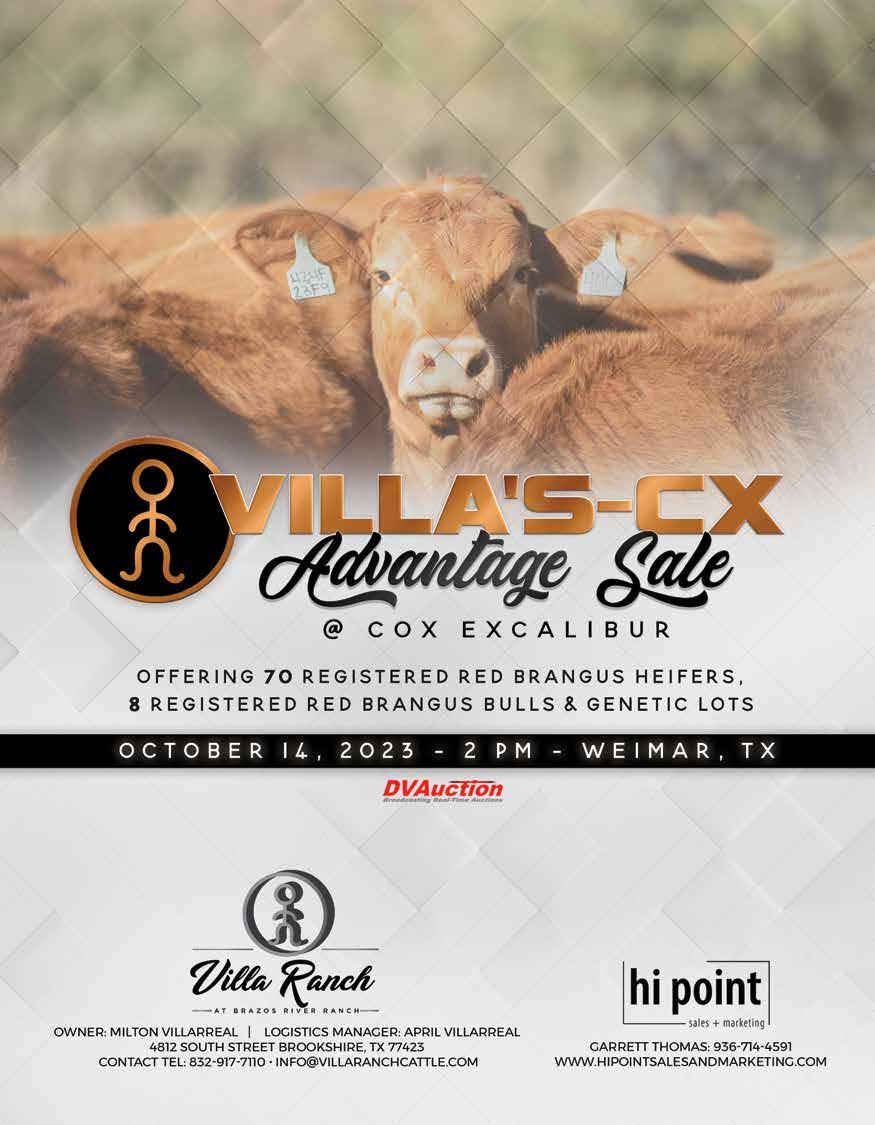
FRONTLINE BEEF PRDUCER The International Brangus Breeders Association (IBBA) is proud to offer its members and industry affiliates the opportunity to promote themselves through Brangus Publications, Inc.’s (BPI) print and digital mediums. IBBA’s printed publications are produced by BPI and are distributed to a mailing list, comprised of addresses in Australia, Colombia, Costa Rica, Mexico, Philippines, Thailand, and the United States; with a circulation of approximately 5,000.
The Frontline Beef Producer (ISSN 0006-9132) is published by Brangus Publications, Inc. (BPI), 8870 US Highway 87 East, San Antonio, Texas 78263, semi-annually in February and September. Periodicals postage paid at San Antonio, Texas and additional mailing offices.
POSTMASTER: send address change to Brangus Publications Inc., P.O. Box 809, Adkins, Texas 78101.
The Frontline Beef Producer is an official publication of the International Brangus® Breeders Association (IBBA). The purpose of the Frontline Beef Producer is to serve the best interest of IBBA members by showcasing breeding programs, efforts, and achievements to other Brangus® seedstock producers and industry partners. Lastly, the Frontline Beef Producer serves as an outlet for the IBBA to provide updates by directly communicating with the membership. The claims made by advertisers in this publication are not verified by BPI or the IBBA.
For subscriptions, email info@gobrangus.com, or call 210.696.8231. Domestic periodicals (one year) $25; first class $55; foreign periodicals (one year) $25; air mail to Canada or Mexico $70; air mail to other countries $115.
FALL 2023 FRONTLINE BEEF PRODUCER 62 ADVERTISING INDEX ALABAMA Addison Brangus Farm ..................................................................... 15 American Cattle Enterprise ................................................... IFC,20,55 Johnston Brangus 55 Lake Majestik 55 Quail Valley Farms IFC Southeast Brangus Breeders Association 9 TTT Brangus Farm .............................................................................. 56 ARKANSAS Big D Ranch 21 CDP Brangus 32,33,56 Chimney Rock Cattle Co. 56 Mobley, Luke .................................................................................... 55 Sewell Cattle Co., Inc......................................................................... 56 CALIFORNIA Spanish Ranch 28,56 FLORIDA FA Cattle Company 24 Fenco Farms 29,49,56 Phillips Ranch 29,56 GEORGIA L.G. Herndon, Jr. Farms .............................................................. 35,56 KANSAS Hurla Farms Feedlot 30 LOUISIANA Midsouth Cattle Company 5 Neal Ranch 5,57 The Branch Ranch 18,57 Wiley Ranch ................................................................................ IFC,56 MISSISSIPPI Double W Ranch 57 Pine Belt Alliance 10,57 T3 Brangus 10 Town Creek Farm .............................................................................. 23 MISSOURI GENEPLUS ............................................................................... 3,46,47 Wyman Creek Cattle Company ......................................................... 57 NEBRASKA DVAuction 5,9,15,29,61, IBC NEW MEXICO Brinks Brangus at Westall Ranches .................................................. 57 OKLAHOMA Lawman Ranch 57 Oklahoma Brangus Association ........................................................ 36 TEXAS Briggs Ranches 25 Cattle Solutions IFC,25,35 Cavender Ranches ...................................................... 16,17,25,51,57 Cross F Cattle .................................................................................... 58 Elgin Breeding Services, LLC ............................................................ 26 Farris Ranching Company 50 Genesis Ranch 58 GKB Cattle 54 Harris Riverbend Farms 25 Hi Point Sales + Marketing ................................... 5,13,21,53,61,IBC Jackson Family Brangus ................................................................... 58 Kaechele Ranch 20 Lambert, Doak 55 MP Brangus 58,IBC Oak Creek Farms BC Oakley, Lakin .................................................................................... 55 Pennridge Ranch .............................................................................. 58 Pitchford Cattle Company ................................................................. 25 Ramro LLC/RJ Cattle Co. 52 Reagan, Terry 55 San Jose Cattle Company 25 Santa Rosa Ranch 37,58 Scamardo Brangus ...................................................................... 13,58 Schmidt Farms .................................................................................. 59 Stalwart Ranches 11,59 Star G Ranch 59 Texas Drovers 20 Villa Ranch 53,59,61 Wild M Brangus ................................................................................ 59 ABOUT THE
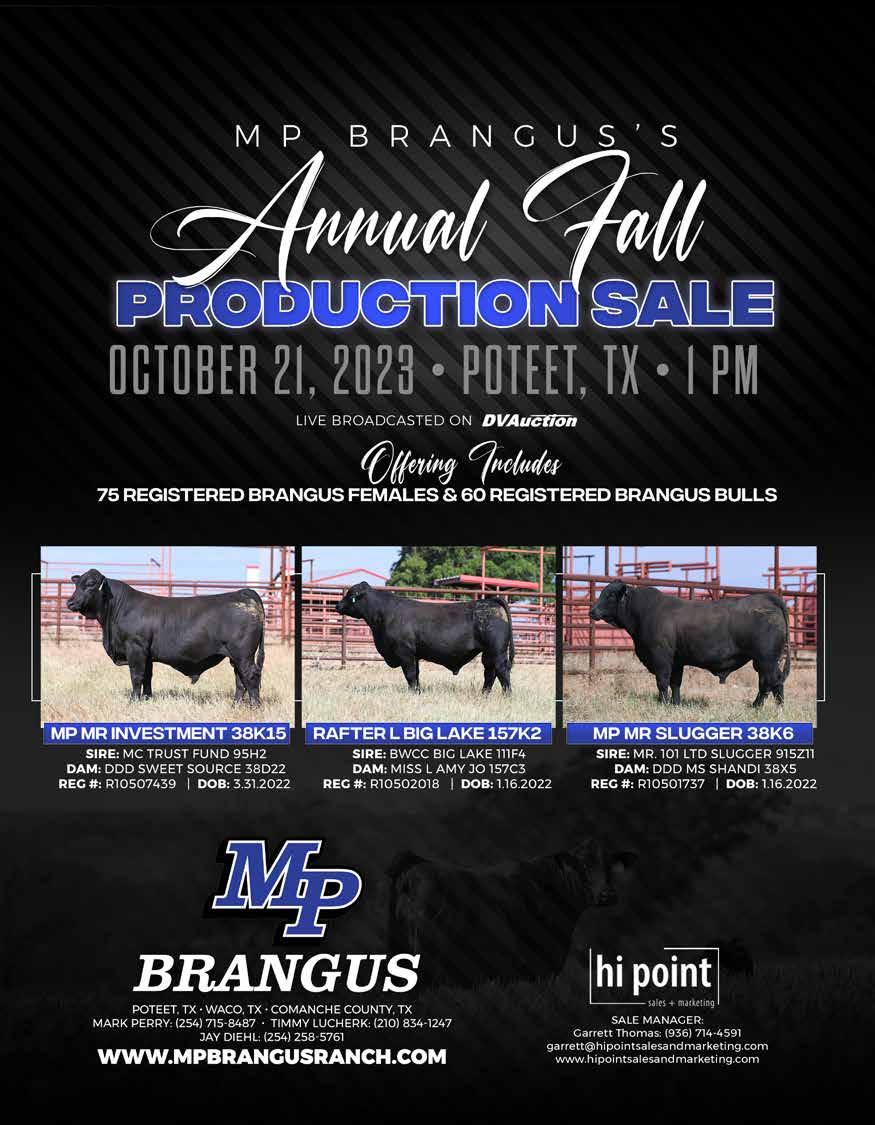
True 3/8th x 5/8th Brangus were developed 70 years ago. They fit the environment better and thrive in the heat and still produce good, high-quality BEEF.
Dr. Joe Paschal Emphasizes the Benefits ofTrue Brangus.
• True Brangus can take the heat…they have larger and more numerous sweat glands.
• Carcass Merit…120 OCF steers graded 95% Choice & Prime.
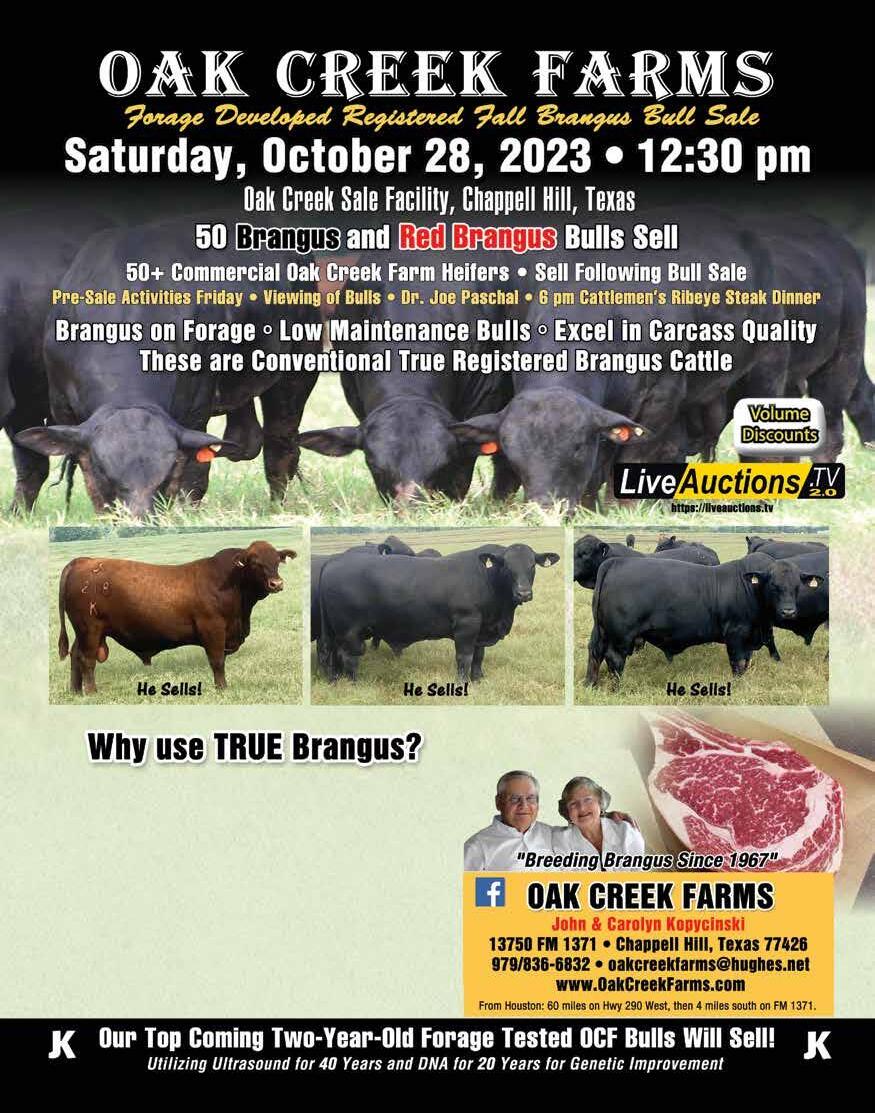
• Longevity…you can expect 1 to 2 more calves in their lifetime.
• Better Foragers…adapted to grazing on forage and shrubs.
• Increased Heterosis…growth enhanced by the stabilized 3/8 Bos Indicus in OCF’s 3/8 x 5/8 Brangus resulting in better performance with less inputs.
• Higher Internal & External Parasite Tolerance OCF is in our 8th year with no fly treatment!


























































 by Kyle Caldwell,
by Kyle Caldwell,



































































































































